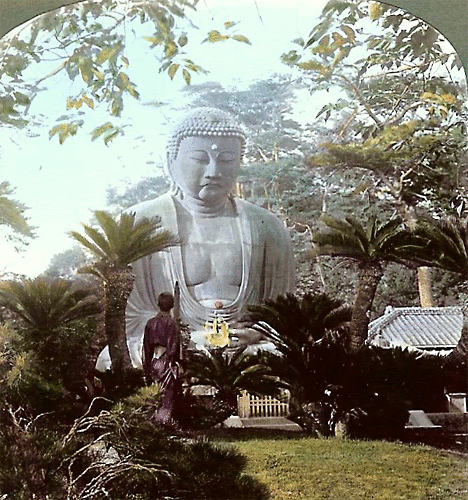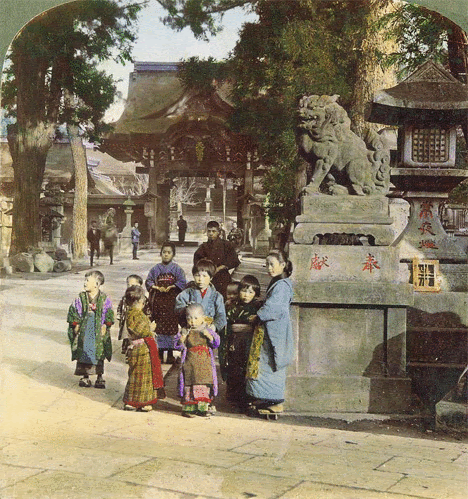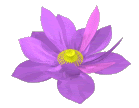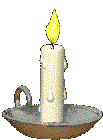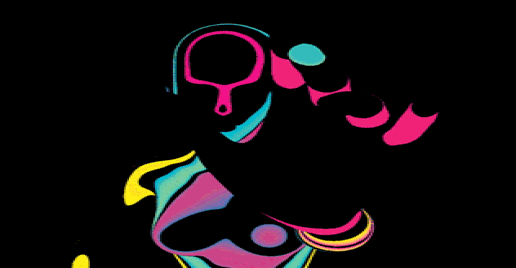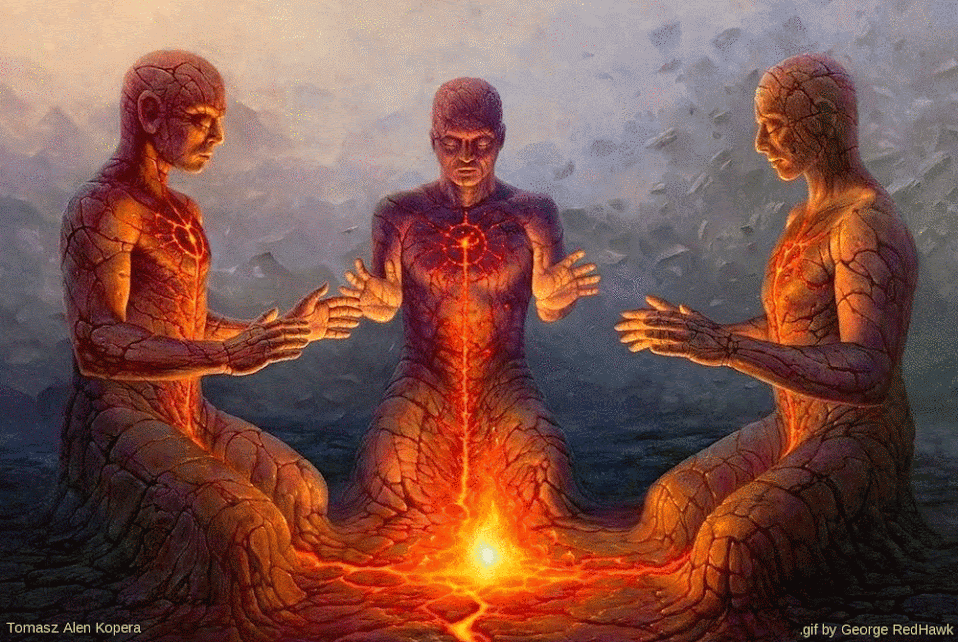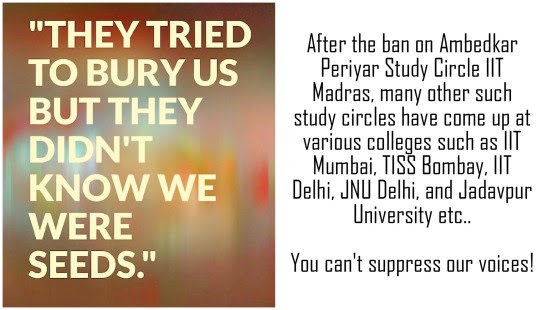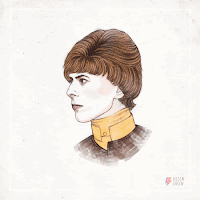06/18/20
Filed under:
General
Posted by:
site admin @ 8:43 am
LESSON 3358 Fri 19 Jun 2020
Free
Online Analytical Insight Net for Discovery of Metteyya Awakened One with Awareness Universe (FOAINDMAOAU)
For
The Welfare, Happiness, Peace of All Sentient and Non-Sentient Beings and for them to Attain Eternal Peace as Final Goal.
From
KUSHINARA NIBBANA BHUMI PAGODA
in 116 CLASSICAL LANGUAGES
Through
At
WHITE HOME
668, 5A main Road, 8th Cross, HAL III Stage,
Prabuddha Bharat Puniya Bhumi Bengaluru
Magadhi Karnataka State
PRABUDDHA BHARAT
DO GOOD PURIFY MIND AND ENVIRONMENT
Words of the Metteyya Awakened One with Awareness
from
Free Online step by step creation of Virtual tour in 3D Circle-Vision 360° for Kushinara Nibbana Bhumi Pagoda

TO

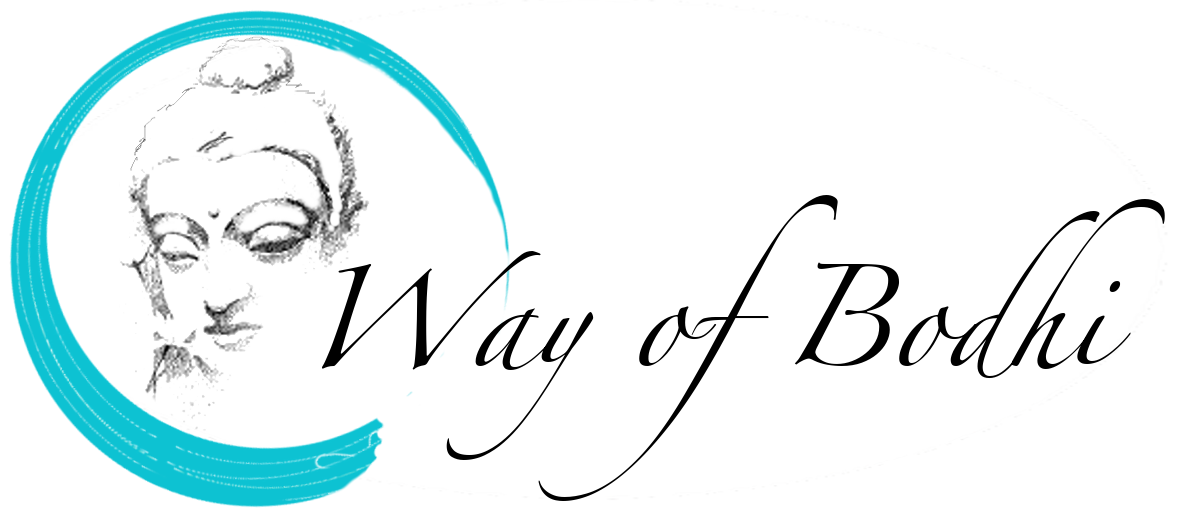
https://www.quora.com/What-language-did-Gautama-Buddha-speak-according-to-Indian-mythology-and-why-is-it-significant
The Original Language of the Buddha and His Teachings
The Buddha spoke in a language called Magadhi Prakrit.
Magadhi Prakrit is the spoken language of
the ancient Magadha kingdom, one of the 16 city-state kingdoms at the
time, located in the eastern Indian subcontinent, in a region around
modern-day Bihār,
and spanning what is now eastern India, Bangladesh, and Nepal. The
first Magadha king is Bimbisara (558 BC –491 BC), during whose reign the
Buddha attained enlightenment. Both king Bimbisara and his successor
son Ajatashatru, were mentioned in several Buddhist Sutras, being lay disciplines, great friends and protectors of the Buddha

Magadha empire, ~500 BCE
The Magadha kingdom later became part of the Mauryan Empire, one of the world’s largest empires in its time, and the largest ever in the Indian subcontinent.
Mauryan Empire, 265 BCE
Magadhi Prakrit is the official language of the Mauryan court. Its emperor “Ashoka
the Great” (ruled 273- 232 BCE) united continental India. During the
war to conquer Kalinga, the last Southern part of India not subject to
his rule, he personally witnessed the devastation that caused hundred of
thousands of deaths, and began feeling remorse. Although the annexation
of Kalinga was completed, Ashoka embraced the teachings of Buddhism, and renounced war and violence. He sent out missionaries to travel around Asia - his son Mahinda and daughter Sanghamitra, who established Buddhism in Ceylon (now Sri Lanka) - and spread Buddhism to other countries.
Stone lion of Ashoka, later became symbol of modern India
Magadhi Prakrit is predominantly the language by which Emperor Ashoka’s edicts were composed in. These edicts were carved on stone pillars placed throughout the empire.
The inscriptions on the pillars described edicts about morality based on Buddhist tenets.
Ashoka Pillar at Feroze Shah Kotla, Delhi, written in Magadhi, Brami and Urdu
Geographically,
the Buddha taught in Magadha, but the four most important places in his
life are all outside of it. It is likely that he taught in several
closely related dialects of Middle Indo-Aryan, which had a high degree
of mutual intelligibility.
Brāhmī Alphabet

The Brāhmī alphabet is the ancestor of most of the 40 or so
modern alphabets, and of a number of other
alphabets, such as Khmer and Tibetan.
It is thought to have been modelled on the Aramaic
or Phoenician alphabets, and appeared in Jambudvipa sometime before 500 BC.
The earliest known inscriptions in the Brāhmī alphabet are those of
King Asoka (c.270-232 BC), third monarch of the Mauryan dynasty.
Brāhmī was used to write a variety of languages, including Prakrit.
Notable features
- Type of writing system: abugida - each letter represents a consonant with an
inherent vowel. Other vowels were indicated using a variety of diacritics
and separate letters.
- Letters are grouped according to the way they are pronounced.
- Many letters have more than one form.
- Direction of writing: left to right in horizontal lines
Vowels and vowel diacritics
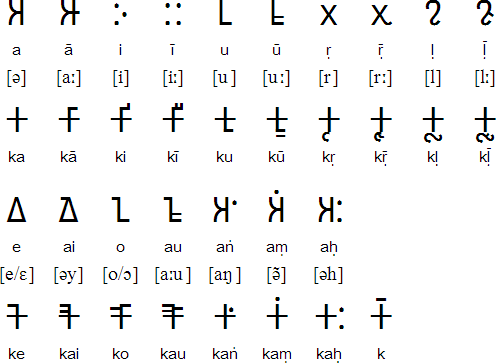
Consonants
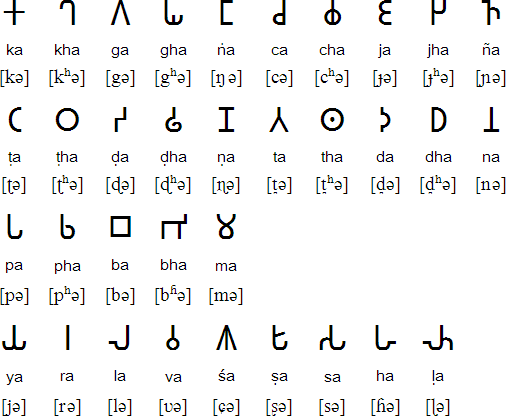
Sample text
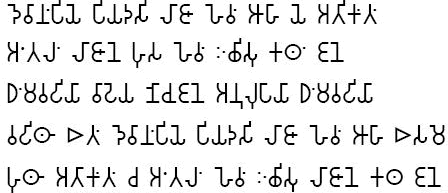
Asokan Edict - Delhi Inscription
Transliteration
devānaṁpiye piyadasi lājā hevaṁ āhā ye atikaṁtaṁ
aṁtalaṁ lājāne husa hevaṁ ichisu kathaṁ jane
dhaṁmavaḍhiyā vāḍheya nocujane anulupāyā dhaṁmavaḍhiyā
vaḍhithā etaṁ devānaṁpiye piyadasi lājā hevaṁ āhā esame
huthā atākaṁtaṁ ca aṁtalaṁ hevaṁ ichisu lājāne katha jane
Translation
Thus spoke king Devanampiya Piyadasi: “Kings of the olden time have gone to heaven under
these very desires. How then among mankind may religion (or growth in grace) be increased?
Yea, through the conversion of the humbly-born shall religion increase”
Source: http://www.virtualvinodh.com/brahmi-lipitva/144-asokan-edict-delhi
Some modern descendants of Brāhmī
Bengali,
Devanāgarī,
Gujarāti,
Gurmukhi,
Kannada,
Khmer,
Malayalam,
Odia,
Sinhala,
Tamil,
Telugu,
Tibetan
Links
Information about Brāhmī
http://en.wikipedia.org/wiki/Br%C4%81hm%C4%AB_script
http://www.virtualvinodh.com/brahmi-lipitva
http://www.ancientscripts.com/brahmi.html
http://www.nibbanam.com/Brahmi/brahmi.htm
Brāhmī fonts
https://sites.google.com/site/brahmiscript/
The Edicts of King Asoka
http://www.cs.colostate.edu/~malaiya/ashoka.html
ALPHABETUM - a Unicode font
specifically designed for ancient scripts, including classical
& medieval Latin, ancient Greek, Etruscan, Oscan, Umbrian,
Faliscan, Messapic, Picene, Iberian, Celtiberian, Gothic, Runic,
Old & Middle English, Hebrew, Sanskrit, Old Nordic, Ogham,
Kharosthi, Glagolitic, Old Cyrillic, Phoenician, Avestan, Ugaritic,
Linear B, Anatolian scripts, Coptic, Cypriot, Brahmi, Old Persian cuneiform:
http://guindo.pntic.mec.es/~jmag0042/alphabet.html
Some of the writing systems used to write Sanskrit
- Ahom,
- Badaga,
- Balinese,
- Batak,
- Baybayin (Tagalog),
- Bengali,
- Bima,
- Blackfoot,
- Brahmi,
- Buhid,
- Burmese,
- Carrier,
- Chakma,
- Cham,
- Cree,
- Dehong Dai,
- Devanagari,
- Dives Akuru,
- Ethiopic,
- Evēla Akuru,
- Fraser,
- Gondi,
- Grantha,
- Gujarati,
- Gupta,
- Gurmukhi,
- Hanuno’o,
- Inuktitut,
- Javanese,
- Jenticha,
- Kaithi,
- Kannada,
- Kawi,
- Kharosthi,
- Khmer,
- Khojki,
- Kulitan,
- Lampung,
- Lanna,
- Lao,
- Lepcha,
- Limbu,
- Lontara/Makasar,
- Malayalam,
- Manpuri,
- Modi,
- Mongolian Horizontal Square Script,
- Mro,
- New Tai Lue,
- Ojibwe,
- Odia,
- Pahawh Hmong,
- Pallava,
- Phags-pa,
- Ranjana,
- Redjang,
- Sasak,
- Satera Jontal,
- Shan,
- Sharda,
- Siddham,
- Sindhi,
- Sinhala,
- Sorang Sompeng,
- Sourashtra,
- Soyombo,
- Sundanese,
- Syloti Nagri,
- Tagbanwa,
- Takri,
- Tamil,
- Telugu,
- Thai,
- Tibetan,
- Tigalari (Tulu),
- Tikamuli,
- Tocharian,
- Tolong Siki,
- Varang Kshiti
http://www.indicstudies.us/Archives/Linguistics/Brahmi.html
The Brahmi script was the
ancestor of all
South Asian writing
systems. In
addition, many East and Southeast Asian scripts,
such as Burmese, Thai,
Tibetan, and even
Japanese to a very small extent (vowel order),
were also ultimately derived from the Brahmi
script. Thus the Brahmi script was the Indian
equivalent of the Greek script that gave arise
to a host of different systems. You can take a
look at
the evolution of Indian scripts,
or
the evolution of Southeast Asian scripts.
Both of these pages are located at the very
impressive site
Languages and Scripts of India.
You can also take a look at
Asoka’s edict at Girnar,
inscribed in the Brahmi script.
Related links:
Learning Buddha’s Word By Own Dialects Or Magadhi?
It should be Magadhi.
The Original Language of the Buddha and His Teachings
The languages used in Hela Diva in Buddha’s period
Magahi language
in 1) Classical Magahi Magadhi, 2) Classical Chandaso
language, 3)Magadhi Prakrit,
5) Classical Pali, 6) Classical Deva Nagari
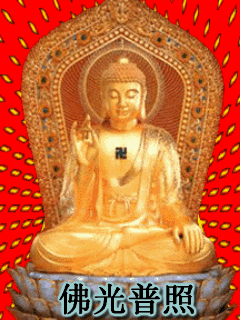
https://dhammawheel.com/viewtopic.php?f=13&t=10635
Learning Buddha’s Word By Own Dialects Or Magadhi?
Dear All,
There were two Bhikkhus complained to the Buddha, that some of the
Bhikkhus were reciting the Buddha’s word by not using the Chandaso
language but their own dialects , thus they requested Buddha to unify
the recitation of Buddha’s word by using Chandaso language but refused
by the Buddha, then Buddha has spoke this:
Anujānāmi, bhikkhave, sakāya niruttiyā buddhavacanaṃ pariyāpuṇitu’’nti.
Translated by Prof.Rhys Davids & Oldenberg:
“I allow you, oh Bhikkhus, to learn the words of the Buddha, each in his own dialect”
But in the other hand, the Pali Tipitaka commentator, Ven. Bhadanta Achariya Buddhagosha in his commentary:
Sakāya niruttiyāti ettha sakā nirutti nāma sammāsambuddhena vuttappakāro māgadhiko vohāro.
“I ordain the words of the Buddha to be learnt in his own language (in Māgadhī, the language used by the Buddha himself)”.
The Buddha spoke in a language called Magadhi Prakrit.
Magadhi Prakrit is the spoken language of the ancient Magadha kingdom,
one of the 16 city-state kingdoms at the time, located in the eastern
Indian subcontinent, in a region around modern-day Bihār,
and spanning what is now eastern India, Bangladesh, and Nepal. The
first Magadha king is Bimbisara (558 BC –491 BC), during whose reign the
Buddha attained enlightenment. Both king Bimbisara and his successor
son Ajatashatru, were mentioned in several Buddhist Sutras, being lay disciplines, great friends and protectors of the Buddha.
Magadha empire, ~500 BCE
The Magadha kingdom later became part of the Mauryan Empire, one of the world’s largest empires in its time, and the largest ever in the Indian subcontinent.
Mauryan Empire, 265 BCE
Magadhi Prakrit is the official language of the Mauryan court. Its emperor “Ashoka
the Great” (ruled 273- 232 BCE) united continental India. During the
war to conquer Kalinga, the last Southern part of India not subject to
his rule, he personally witnessed the devastation that caused hundred of
thousands of deaths, and began feeling remorse. Although the annexation
of Kalinga was completed, Ashoka embraced the teachings of Buddhism, and renounced war and violence. He sent out missionaries to travel around Asia - his son Mahinda and daughter Sanghamitra, who established Buddhism in Ceylon (now Sri Lanka) - and spread Buddhism to other countries.
Stone lion of Ashoka, later became symbol of modern India
Magadhi Prakrit is predominantly the language by which Emperor Ashoka’s edicts were composed in. These edicts were carved on stone pillars placed throughout the empire.
The inscriptions on the pillars described edicts about morality based on Buddhist tenets.
Geographically,
the Buddha taught in Magadha, but the four most important places in his
life are all outside of it. It is likely that he taught in several
closely related dialects of Middle Indo-Aryan, which had a high degree
of mutual intelligibility.
Magadhi Prakrit shares a genealogy with Sanskrit – an Indo-Aryan language, with commonalities to ancient German and Persian. The sacred Hindu Vedas and Upanishads
text are written in this language. Since Buddha was a prince, he would
have spoken Sanskrit, the language of Brahmins and aristocrats, and
used in formal religious texts. But many of his followers were common
people who would not have been educated in Sanskrit. The Sutra record
stated that the Buddha was opposed to the use of Sanskrit for his
preaching. He preferred the vernacular Magadhi for his preaching and
sermon.
Although the Buddha’s teaching was in Magadhi, there is
no written record of his teaching in this language. Immediately after
his death, under the sponsorship of king Ajatashatru, his elder student
Mahakassapa organized the “First Buddhist council”
during which Ananda, the Buddha’s cousin and long time aide, with
prodigious memory, was asked to recite his teachings, which were
carefully memorized.
When the Buddhist teachings started to
spread during Ashoka’s time, they were continually translated into the
local dialects and languages.
When the teachings started to be
written down, around three or four hundred years after the death of the
Buddha, there already existed several different, carefully memorized,
versions - one of which is the Pali version. Only one complete version of the set of Vinaya (inventories of rules to be observed by monks/nuns), Sutra (record of the discourse of the Buddha) and Abhidharma (Commentaries) has survived in the Pali language, preserved by the Theravadin
School. Consequently this copy has been regarded as the authoritative
account of the Buddha’s teachings in Sri Lanka, Burma, Thailand, Laos
and Cambodia, the home of the Theravadin School.
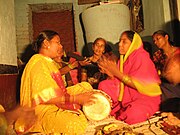
https://www.quora.com/Did-Gautama-Buddha-preach-in-Pali-or-…
It should be Magadhi.
Because, Pali (पालि / பாளி) was not a vernacular language spoken during
the period of Shakyamuni, Siddhartha Gautama. As Magadhi Bhasha is
believed to be Siddhartha’s mother tongue, it is highly likely that he
delivered his teachings in that language.
Some linguists argue that Pali must simply be a text version of
Magadhi. In fact, the word “pali” simply means “line” or “mark” in
ancient Indo-Aryan languages (Prakrits and Sanskrit). It can be roughly
understood as “text” as the language Pali was used only after writing
system was introduced in ancient India.
Some other linguists
believe that Pali must be a mix of several Prakrit languages in order to
make majority of the ancient Indians to understand Buddha’s teachings.
However, it is very obvious that Buddha would not have used Pali during
his lifetime. It should be Magadhi.
නිවන් අවබෝධ කර ගැනීමට උපකාරී වන්නේ පරම පවිත්ර සිරි සද්ධර්මයයි !
The languages used in Hela Diva in Buddha’s period
All the rulers in Hela Diva (Deva Hela) mainly used two languages.
- Magadhi Prakruth language
- Hela Basa (Hela Language)
As a whole, the language of the ordinary citizens in the entire Hela Diva was Hela Basa. Hela Basa had been used as a spoken language and also as a written language. Hela Basa was used everywhere by ordinary citizens, in the day today life and also in their trading activities.
Prakruth Magadhi language was a language of the great scholars. Magadhi language was used for technology, science & craftsmanship and administration of the country. Magadhi
language was used commonly in the county of Magadha of which the city
of Rajagaha was the capital city. The scholars, rulers of the country,
clergy, Brahmans and some Counts learnt and used the Magadhi language. Everyone who used Maghadi language knew Hela Basa as well. The gap between Magadhi language and Hela language was not that much great. Maghadi language
was used to learn any particular skill & knowledge or any science.
It can be seen that the mass in the general public did not use the
profound Maghadi language.
Buddha used Maghadi language to teach Dhamma in all the sixteen states in Janbudveepa Hela Diva. The Dhamma preached in Maghadi language was easily understood by the common people who used Hela Basa as well. In the ancient times there lived scholars in Hela Diva who knew Hela Basa as well and they present Artha, Dharma, Nirukthi and Patibhana for the intellectual Buddha Dhamma which was taught in Maghadi language. Because of this, Buddha Dhamma preached in Magadhi language by Gautama Buddha was analyzed during that period itself and Hela Commentaries were written for them. Hela Basa was a written language, but not the Maghadi language. Because of this, within the same period of time, Commentary writing (Attha katha)[2] in Hela Basa was done for the Buddha Dhamma preached by Gautama Buddha. In order to analyze and present explanations for the teachings of Buddha, in the ancient times in Hela Bima, five Artha kathas written in Hela Basa had been used and they are Hela Atuwa, Kurundi Atuwa, Budukali Atuwa, Seehala Attha Katha and Mahaatta Katha. All these Attha Kathas were written on Buddha Dhamma preached by Gautama Buddha in Maghadi language. These original Hela Atuwa could be seen even in the Anuradhapura period. The alphabet used for Magadhi language and Hela Language was the same. There were no two different alphabets. Both these languages used a methodology of Prakrit letters.
But by this time, what used in India were the Brahmi letters and the
Sanskrit language. The ordinary citizens in India never used Maghadi language or Hela Basa. Because of this, one can notice that there are certain differences between the letters used in Lanka in the very old age in Helabima,
which is the Buddha’s period even before Anuradhapura period, and the
letters used in Anurahapura after Ashoka’s period. The consequence of
this were that the inscriptions reader of the Anuradhapura period
experienced difficulties in reading inscriptions written in Buddha’s
period in Hela Diva. But the pattern of the letters in
Anuradapura period and Ashoka period was very similar. This is because
of the influence from India. In the ancient Hela Diva, rulers and some scholars from Yakkha Hela where Yakkha & Naaga tribes lived knew both languages, Maghadi and Hela Basa. Rulers of Yakkha tribe such as Saathaagira and Hemawatha could understand the Dhamma preached by Gautama Buddha in Maghadi language. Even King Samana could understand Dhamma. And also the great King Wessawana introduced the enactment of Aataanaataa to Gautama Buddha in Magadhi language. Gautama Buddha preached the same to his disciples again in Magadhi language.
In the ancient times Arahant Mahinda Thero came to Hela Diva (Lanka), went to the capital city of Rajagaha (Ampara) in the kingdom of Magada, learnt both Magadhi language & Hela Basa for few years, took the Budu Kali Commentaries written in Hela Basa to Anuradhapura and preached Buddha Dhamma to King Dewana Paathis in both Magadhi language & Hela Basa. This means that most of the people lived in the kingdom of Anuradhapura too knew Hela Basa and Magadhi language very well. Gradually, Helabasa became the language of the common man and Magadhi language became the language of the intellectuals.
This Magadhi language used by the intellectuals in all the sixteen states in Hela Diva and also in Yakkha Hela & Naaga Hela
had never ever been a language to be used by any region or any kingdom
in India. All the languages prevailed in India that day were based on
Sanskrit, but not Prakrit.
After preaching Dhamma by Gautama Buddha in Hela Diva, Dhamma spread out gradually to South India and the regions like east Kerala. When Buddha Dhamma was spread out in this manner, Maghadi language was used in the kingdoms in South and East India. As a result of this, books written in Hela Diva in Magadhi and Hela languages were translated in to Indian languages. Indian universities too started teaching Maghadi language and that is only after the spreading of Buddha Dhamma. Pela[3] is not a language. Pela Dhamma is nothing but the texts or passages of Buddha Dhamma in Magadhi language which are in the form of lines or arranged into lines. Buddha Dhamma
was presented in this manner, in the form of lines, as it helps in easy
reading by heart and registers in mind thoroughly. After 7 centuries,
in the latter part of Anuradhapura period, Pela Dhamma was transformed in to a language called Pali and later modified it as a language with grammar. Pali language which is used and learnt at present is a created, modified language and not the same Magadhi language used by Buddha to preach Dhamma. There are many differences between these two. Artha, Dharma and Nirukthi can be presented for the Magadhi terms which were used by the Buddha. Pali language has only customary meanings.
[2] Atta Katha or Attha Katha or Artha Katha
– the commentaries were written with the aim of explaining something in
a simple manner, to make easy the reader to understand certain
difficult words.
H.H. Dorje Chang Buddha III
The Original Language of the Buddha and His Teachings
Extracted from the book “Buddhist Sutras: Origin Development” by Kogen Mizuno.
“The
original language of the sutras seems to have been Magadhi, which
Shakyamuni used in preaching. Of all the Indic language versions of
sutras used as Buddhist texts today, those written in Pali are the most
numerous and are widely used in the Southern Buddhist countries Sri
Lanka, Burma, and Thailand. According to Southern Buddhist tradition,
Pali is regarded as the language that Shakyamuni spoke, and therefore is
called Magadhi or the fundamental language. However, recent studies
show that although a little of the Magadhi influence is still evident in
the Pali language, the basic characteristics of the two languages are
different.
“The
two important language families of India are Indic and Dravidian. All
Buddhist sutras were originally compiled in Indic languages, which
developed in various parts of India over a period of three or four
thousand years. In present day India more than ten major languages-
including Hindi, Urdu, Bengali, Bihari, Marathi, and Punjabi- belong to
this family, and together they number several hundred dialects. Sanskrit
and fourteen modern languages are now officially sanctioned by the
Indian constitution, and in a large house it is possible for several of
the recognized languages to be in use, since servants from different
areas and family members would all speak in their own languages or
dialects.
“This
rich linguistic heritage was noted in earlier times, when, for example,
in plays one could identify a character’s occupation and social status
through the prescribed language he or she spoke. Kings, ministers, and
Brahmans spoke Sanskrit, the most highly esteemed and inflected
language; queens, princesses, nuns and courtesans spoke a graceful
language called Shauraseni; the general populace, such as merchants and
artisans, spoke Magadhi; and the lower classes spoke Paishachi. Even
lyrics had their own pleasant to the ear language, Maharashtri.
“The
five languages just mentioned originated in the dialects of different
areas, but the languages in Shakyamuni’s time belonged to a period
earlier than that of these five languages. However, even in Shakyamuni’s
time, regional languages already differed, and each language had its
own unique characteristics, as we can see from the edicts of Ashoka,
issued about two centuries after the death of Shakyamuni. Ashoka had his
edicts carved on large rocks and stone pillars, and one particular
edict was written in a different language in each of the eight areas
where it has been found. The languages of the edicts in India, which can
be divided into four or five regional groups, correspond to the five
languages used in drama of later periods. In time they became regional
languages of the Apabhramsha family, and still later they developed into
the modern Indic languages.
“The
language Shakyamuni spoke was the one in general use around the middle
reaches of the Ganges, where he was active. Since the area was later
called Magadha, its language was called Magadi (or Old Magadhi), and
because many of Emperor Ashoka’s edicts have been found in this area, we
have an idea of what the Magadhi Shakyamuni spoke was like.
“In
the time of Shakyamuni, the Vedas, the holy scriptures of Brahmanism,
were transmitted in Vedic Sanskrit, which was the forerunner of
classical Sanskrit. Both Vedic Sanskrit and classical Sanskrit are
elegant, highly inflected, complex languages. The Vedic scriptures were
transmitted only to the educated upper classes, never to the lower
classes. Shakyamuni, who wanted his teachings to reach all classes of
society equally, thought that the lower classes would be the focus of
his ministry and therefore preached his teaching in Magadhi, the
everyday language of the common people, so that even the lower classes
could understand him.”
An
excerpt from “Bones, Stones, and Buddhist Monks: Collected Papers on
the Archaeology, Epigraphy, and Texts of Monastic Buddhism in India” by
Gregory Schopen
“We
know, and have known for some time, that the Pali canon as we have it-
and it is generally conceded to be our oldest source- cannot be taken
back further than the last quarter of the first century BCE, the date of
the Alu-vihara redaction, the earliest redaction that we can have some
knowledge of, and that-for a critical history- it can serve, at the very
most only as a source for the Buddhism of this period. But we also know
that even this is problematic since as Malalasekera has pointed out
‘…how far the Tipitaka and its commentary reduced to writing at
Alu-vihara resembled them as they have come down to us now, no one can
say.’ In fact, it is not until the time of the commentaries of
Buddhaghosa, Dhammapala, and others- that is to say the fifth to sixth
centuries C.E.- that we can know anything definite about the actual
contents of this canon.
“We
also know that there is no evidence to indicate that a canon existed
prior to the Alu-vihara redaction. Although Ashoka in his Dhabra Edict
specifically enjoined both monks and laymen to recite certain texts,
which he named, he nowhere in his records gives any indication that he
knew of a canon, or the classification of texts into nikayas.”
I
personally have great faith in the memory-power of the monks who
memorized the Buddhist Sutras from the time of the Buddha and
transmitted them verbally from generation to generation for about 400
years before they were actually written down. And in terms of dating the
earliest recorded Sutras, it is my understanding that parts of the
Sutta Nipata in Pali and parts of the Mahavastu in Buddhist Hybrid
Sanskrit (from the Shravastivadin tradition) are the oldest known
recorded Sutras- both dating back to about 350 years after the Buddha.
Again, I didn’t mean to be too long-winded in this explanation, but I
thought people might be interested in knowing a little more, if they
didn’t know already, about these questions of language and the Buddhist
Sutras.
A
little footnote: according to our tradition and the historical records
of Ancient China the earliest Sutra translated from the Indic languages
into Chinese was the Sutra in 42 Sections in 69 C.E.
Sincerely, in Dharma, Heng Shun
Magahi language
The Magahi language, also known as Magadhi, is a language spoken in Bihar, Jharkhand and West Bengal states of eastern India. Magadhi Prakrit was the ancestor of Magadh, from which the latter’s name derives.[5] Magadhi has approximately 18 million speakers.
It has a very rich and old tradition of folk songs and stories. It is spoken in ten districts of Bihar (Gaya, Patna, Jehanabad, Aurangabad, Nalanda, Nawada, Arwal, Lakhisarai, Sheikhpura, Jamui) and eight districts of Jharkhand (Palamu, Chatra, Hazaribag, Koderma, Deoghar, Jamtara, west singhbhum, Bokaro, Dhanbad, Giridih). In West Bengal, it is spoken in Malda district.[6]In Odisha, it is spoken in kendujhar district.
Magahi or Magadhia language derived from the ancient Magadhi Prakrit, which was created in the ancient kingdom of Magadha, the core of which was the area south of the Ganges and east of Son River. It is believed to be the language spoken by Gautama Buddha. It was the official language of the Mauryan court, in which the edicts of Ashoka were composed.
The name Magahi is directly derived from the name Magadhi
Prakrit, and educated speakers of Magahi prefer to call it “Magadhi”
rather than “Magahi”.
Though the number of speakers in Magahi is large, it has not been
constitutionally recognised in India. In Bihar Hindi is the language
used for educational and official matters.[7] Magadhi was legally absorbed under Hindi in the 1961 Census.[8]
History
The ancestor of Magadhi, Magadhi Prakrit,
formed in the Indian subcontinent in a region spanning what is now
India and Nepal. These regions were part of the ancient kingdom of Magadha, the core of which was the area of Bihar south of the Ganges.
The name Magahi is directly derived from the word Magadhi, and educated speakers of Magahi prefer to call it Magadhi rather than Magahi.[9]
Grammarian Kachchayano wrote of the importance of Magadhi, “There is a
language which is the root (of all languages); men and Brahmans spoke
it at the commencement of the kalpa, who never before uttered a human
accent, and even the supreme Buddhas spoke it: it is Magadhi.”[10]
The development of the Magadhi language into its current form is
unknown. However, language scholars have come to a conclusion that
Magahi, Maithili, Bhojpuri, Bengali, Assamese and Oriya
originated from the Mithila Prakrit or might be Bengali Prakrit during
the 8th to 11th centuries. These different dialects differentiated
themselves and took their own course of growth and development. But it
is not certain when exactly it took place. It was probably such an
unidentified period during which modern Indian languages begin to take
modern shape. By the end of the 12th century, the development of Apabhramsa reached its climax. Gujarati,
Marathi, Bengali, Assamese, Oriya, Maithili and other modern languages
took definite shape in their literary writings in the beginning of the
14th century. The distinct shape of Magadhi can be seen in the Dohakosha written by Sarahapa and Kauhapa. Magahi had a setback due to the transition period of Magadha administration.[11]
Traditionally, strolling bards recite long epic poems in this dialect,
and it was because of this that the word “Magahi” came to mean “a bard”.
Kaithi is the script generally used for it. The pronunciation in Magahi
is not as broad as in Maithili and there are a number of verbal forms
for each person.[12]
Historically, Magahi had no famous written literature. There are many
popular songs throughout the area in which the language is spoken, and
strolling bards recite various long epic poems
which are known more or less over the whole of Northern India. In
Magahi spoken area folk singers sing a good number of ballads.
Introduction of Urdu meant a setback to local languages as its Persian
script was alien to local people.
The first success for spreading Hindi occurred in Bihar in 1881, when Hindi displaced Urdu
as the official language of the province. After independence, Hindi was
given the sole official status through the Bihar Official Language Act,
1950.[13]
Weekdays
| English |
Magahi/Magadhi |
मगही/मागधि |
Hindi |
Urdu |
| Sunday |
Eitwaar |
एतवार |
Ravivwaar |
Eitwaar |
| Monday |
Somaar |
सोमIर |
Somwaar |
Peer |
| Tuesday |
Mangal |
मंगल |
Mangalwaar |
Mangal |
| Wednesday |
Budhh |
बुध |
Buddhwaar |
Budhh |
| Thursday |
Barashpat/Bife |
बृहस्पत |
Guruwaar/Brihaspatiwar |
Jumeraat |
| Friday |
Sookkar/Sookra |
शुक्कर |
Shukrawaar |
Jumma |
| Saturday |
Sanichchar |
शनिच्चर |
Shaniwaar |
Hafta |
Fruits and vegetables
| English |
Magahi/Magadhi |
मगही/मगधी |
English |
Magahi/Magadhi |
मगही/मगधी |
| Mango |
Aam |
आम |
Apple |
Seo |
सेव |
| Orange |
Narangi/Santola /Kewla |
नारंगी/संतोला/केवला |
Lemon |
Lemu |
लेमू |
| Grapefruit; pomelo |
Mausmi/ |
मौसमी |
Papaya |
Papita |
पपीता |
| Guava |
Amrud |
अमरुद |
Melon |
Jaamun/phnela |
जामुन/फ्नेला |
| Sweet Potato |
Shataalu |
शतालु |
Pomegranate |
Anāra/Bidānā |
अनार/बिदाना |
| Grape |
Angoor |
अंगूर |
Custard apple |
Shareefā |
शरीफा |
| Banana |
Kairaa/Kēlā |
कैरा/केला |
Lychee |
Litchi |
लीच्ची |
| Tomato |
Tamaatar |
टमाटर |
Jackfruit |
Katahar/kathal |
कटहर/कटहल |
| Jack Fruit |
Bhuikatahar |
भुईकटहर |
Watermelon |
Tarabūjā |
तरबूजा |
| Muskmelon |
kharabūjā/Lālmi |
खरबूजा/लालमी |
Family relations
| English |
Magahi/Magadhi |
मगही/मगधी |
| Father |
Baabuji / PitaJee |
बाबूजी / पिताजी |
| Mother |
Maiya / Maay |
मईया / माय |
| Sister |
Bahin / Didi |
दीदी / बहिन |
| Brother |
Bhaai / Bhaiya |
भाई / भईया |
| Grandfather |
Baaba / Daada |
बाबा / दादा |
| Grandmother |
Mama / Daadi |
मामा / दादी |
| Sister-in-law |
Bhaujai / Bhauji |
भौजाइ / भौजी |
Spoken trends
Addition of “Waa” or “eeya” to nouns and sometimes verbs
For male nouns:
In Hindi with Magahi/Magadhi style – “सलमनवा के पास एगो मोटरसाइकिल है”
In true Magahi/Magadhi language - “सलमनवा भिजुन एगो मोटरसाइकिल हई”
English translation – Salman has a motorcycle.
For female nouns:
In Hindi with Magahi/Magadhi style – “रिमिया रिया सेनवा के बहन है”
In true Magahi/Magadhi language - “रिमिया रिया सेनवा के बहीन हई”
English translation – Rimi is the sister of Riya Sen
In Hindi with Magahi/Magadhi style – “लठीया चला के तोर कपरवे फोर देंगे”
In true Magahi/Magadhi language - “लठीया चला के तोहर कपरवे/कपरवा फोर देम ”
English translation – (I’ll) throw the baton and crack your skull
In Hindi with Magahi/Magadhi style – “जानते हो, मोहना का बाप मर गया है”
In true Magahi/Magadhi language - “जानअ ह, मोहना के बाप / बाबूजी / बाबा /बावा मर् गेलथिन”
English translation – You know, Mohan’s dad has died
Apart from these all other females names and other nouns get “waa” in their ends.
Addition of “eeye” or “ey” in adverbs, adjectives and pronouns
In Hindi with Magahi/Magadhi style – हम बहुत नजदिके से आ रहें है
In true Magahi/Magadhi language – हम/हमनी बहुत नजदिके (बहुते नज़दीक)/भीरी से आवईत हिवअ/ आ रहली हे
English translation – We are coming from a very near place
Within Magahi, one can find lot of variation while moving from one
area to other, mainly end of the sentence is with a typical tone like
Hiva, thau, hein etc. It is a rich language with lot of difference one
can see while saying something with respect to elder or one with peer or
younger. For example, there are two counterparts of Hindi “aap” in
existence described in following sentences -
In Hindi—आप आज बाजार गये थे क्या?
In Magahi (To an elder) — तूँ आज बजार गेलहु हल का?
In Magahi (To highly respected persons or teachers) — अपने आज बजार गेलथिन हल का?
In Magahi (To an younger) — तूँ आज बजार गेलहीं हल का?
Magahi is a language of the common people in area in and around
Patna. It has few indigenous written literature, though a number of
folk-tales and popular songs have been handed down for centuries from
mouth to mouth and this remain main form of knowledge transfer in
literature. Strolling bards also known by name “Bhad” recite long epic
poems in this dialect, and sing verses in honor of the heroic
achievements of legendary princes and brave men of ancient time like
“Alha aur udal”. But no manuscriptic text has been seen except that
nowadays people have given it a book form.
Magadhi is spoken in the area which formed the core of the ancient kingdom of Magadha - the modern districts of Patna, Nalanda, Gaya, Jehanabad, Arwal, Aurangabad, Lakhisarai, Sheikhpura and Nawada. Magahi is bounded on the north by the various forms of Maithili spoken in Mithila across the Ganga. On the west it is bounded by the Bhojpuri, On the northeast it is bounded by Maithili and Angika. A blend of Magahi and known as Kharostha (Khortha) is spoken by non-tribal populace in North Chotanagpur division of Jharkhand which comprises districts of Bokaro, Chatra, Dhanbad, Giridih, Hazaribagh, Koderma and Ramgarh.
The number of Magadhi speakers is difficult to indicate because of
unreliable sources. For most of the magahi-speakers, Hindi is the
generic name for their language. People of Southern Bihar and Northern
Jharkhand are mostly speakers of Magadhi language.[14] Current estimates indicate approximately 18 million Magadhi speakers.
Scripts and literary tradition
Magadhi is generally written using Devanagari script. A later-developed script of Magadhi is Kaithi.[12]
There have been effort by scholars in the Magahi area to explore and
identify a literary tradition for Magadhi. Magadhi has a rich tradition
of folk literature, and in modern times there have been various
activities in the publication of literary writing. Magahi Parishad was
established in Patna in 1952, which was renamed Bihar Magahi Mandal. Magadhi, a journal, was started at the same time, which was renamed Bihan,
meaning “tomorrow” or the coming dawn. Later Akhil Bhartiya Magahi
Sahitya Sammelan was established by Dr Ram Prasad Singh in 1977 and
published a well known magazine ” Magahi Lok”. Another very famous
monthly journal was started by Magahi Academy, Gaya edited by Dr. Ram
Prasad Singh. Another magazine “Magadhi” is published by Akhil Bhartiya
Magahi Bhasa Sammelan. It is headed by Kavi Yogesh.[15] Nalanda Open University offers various courses on Magahi.[16].
Maghi language has a lot of poets who with their writings has
influenced the common mass a lot. Among those poets the name of Maghi
Kokil JAIRAM SINGH is indelible. He is one of the scintillating gems of
Maghi Sahitya. His song “बदरिया गाव है कजरिया” created an unforgettable
imprint on the minds of Maghi lovers. His recently published book
“चिजोर” contains a variety of poems.
Weekdays
| English |
Magahi/Magadhi |
मगही/मागधि |
Hindi |
Urdu |
| Sunday |
Eitwaar |
एतवार |
Ravivwaar |
Eitwaar |
| Monday |
Somaar |
सोमIर |
Somwaar |
Peer |
| Tuesday |
Mangal |
मंगल |
Mangalwaar |
Mangal |
| Wednesday |
Budhh |
बुध |
Buddhwaar |
Budhh |
| Thursday |
Barashpat/Bife |
बृहस्पत |
Guruwaar/Brihaspatiwar |
Jumeraat |
| Friday |
Sookkar/Sookra |
शुक्कर |
Shukrawaar |
Jumma |
| Saturday |
Sanichchar |
शनिच्चर |
Shaniwaar |
Hafta |
Fruits and vegetables
| English |
Magahi/Magadhi |
मगही/मगधी |
English |
Magahi/Magadhi |
मगही/मगधी |
| Mango |
Aam |
आम |
Apple |
Seo |
सेव |
| Orange |
Narangi/Santola /Kewla |
नारंगी/संतोला/केवला |
Lemon |
Lemu |
लेमू |
| Grapefruit; pomelo |
Mausmi/ |
मौसमी |
Papaya |
Papita |
पपीता |
| Guava |
Amrud |
अमरुद |
Melon |
Jaamun/phnela |
जामुन/फ्नेला |
| Sweet Potato |
Shataalu |
शतालु |
Pomegranate |
Anāra/Bidānā |
अनार/बिदाना |
| Grape |
Angoor |
अंगूर |
Custard apple |
Shareefā |
शरीफा |
| Banana |
Kairaa/Kēlā |
कैरा/केला |
Lychee |
Litchi |
लीच्ची |
| Tomato |
Tamaatar |
टमाटर |
Jackfruit |
Katahar/kathal |
कटहर/कटहल |
| Jack Fruit |
Bhuikatahar |
भुईकटहर |
Watermelon |
Tarabūjā |
तरबूजा |
| Muskmelon |
kharabūjā/Lālmi |
खरबूजा/लालमी |
Family relations
| English |
Magahi/Magadhi |
मगही/मगधी |
| Father |
Baabuji / PitaJee |
बाबूजी / पिताजी |
| Mother |
Maiya / Maay |
मईया / माय |
| Sister |
Bahin / Didi |
दीदी / बहिन |
| Brother |
Bhaai / Bhaiya |
भाई / भईया |
| Grandfather |
Baaba / Daada |
बाबा / दादा |
| Grandmother |
Mama / Daadi |
मामा / दादी |
| Sister-in-law |
Bhaujai / Bhauji |
भौजाइ / भौजी |
Spoken trends
Addition of “Waa” or “eeya” to nouns and sometimes verbs
For male nouns:
In Hindi with Magahi/Magadhi style – “सलमनवा के पास एगो मोटरसाइकिल है”
In true Magahi/Magadhi language - “सलमनवा भिजुन एगो मोटरसाइकिल हई”
English translation – Salman has a motorcycle.
For female nouns:
In Hindi with Magahi/Magadhi style – “रिमिया रिया सेनवा के बहन है”
In true Magahi/Magadhi language - “रिमिया रिया सेनवा के बहीन हई”
English translation – Rimi is the sister of Riya Sen
In Hindi with Magahi/Magadhi style – “लठीया चला के तोर कपरवे फोर देंगे”
In true Magahi/Magadhi language - “लठीया चला के तोहर कपरवे/कपरवा फोर देम ”
English translation – (I’ll) throw the baton and crack your skull
In Hindi with Magahi/Magadhi style – “जानते हो, मोहना का बाप मर गया है”
In true Magahi/Magadhi language - “जानअ ह, मोहना के बाप / बाबूजी / बाबा /बावा मर् गेलथिन”
English translation – You know, Mohan’s dad has died
Apart from these all other females names and other nouns get “waa” in their ends.
Addition of “eeye” or “ey” in adverbs, adjectives and pronouns
In Hindi with Magahi/Magadhi style – हम बहुत नजदिके से आ रहें है
In true Magahi/Magadhi language – हम/हमनी बहुत नजदिके (बहुते नज़दीक)/भीरी से आवईत हिवअ/ आ रहली हे
English translation – We are coming from a very near place
Within Magahi, one can find lot of variation while moving from one
area to other, mainly end of the sentence is with a typical tone like
Hiva, thau, hein etc. It is a rich language with lot of difference one
can see while saying something with respect to elder or one with peer or
younger. For example, there are two counterparts of Hindi “aap” in
existence described in following sentences -
In Hindi—आप आज बाजार गये थे क्या?
In Magahi (To an elder) — तूँ आज बजार गेलहु हल का?
In Magahi (To highly respected persons or teachers) — अपने आज बजार गेलथिन हल का?
In Magahi (To an younger) — तूँ आज बजार गेलहीं हल का?
Magahi is a language of the common people in area in and around
Patna. It has few indigenous written literature, though a number of
folk-tales and popular songs have been handed down for centuries from
mouth to mouth and this remain main form of knowledge transfer in
literature. Strolling bards also known by name “Bhad” recite long epic
poems in this dialect, and sing verses in honor of the heroic
achievements of legendary princes and brave men of ancient time like
“Alha aur udal”. But no manuscriptic text has been seen except that
nowadays people have given it a book form.
Phonology
Research work done in this field:
- Dr Munishwar Jha - “Magadhi And Its Formation,” Calcutta Sanskrit College Research Series, 1967, 256 pp
- Dr Saryu Prasad - “A Descriptive Study of Magahi Phonology”, Ph.D. thesis submitted to Patna University.
- Dr A.C. Sinha (1966) - “Phonology and Morphology of Magahi Dialect”, Ph.D. thesis submitted to University of Poona.
![[icon]](https://upload.wikimedia.org/wikipedia/commons/thumb/1/1c/Wiki_letter_w_cropped.svg/20px-Wiki_letter_w_cropped.svg.png) |
This section needs expansion. You can help by adding to it. (October 2008)
|
- Dr Sweta Sinha (2014) - “The Prosody of Stress and Rhythm in
Magahi”, Ph.D. thesis submitted to Jawaharlal Nehru University, New
Delhi.
- Dr. Sweta Sinha (2018)- “Magahi Prosody”, Bahri Publications: New Delhi. ISBN 978-93-83469-14-7.
Morphology
Research
work done in this field: Dr A.C. Sinha (1966) - “Phonology and
Morphology of Magahi Dialect”, Ph.D. thesis submitted to University of
Poona.
![[icon]](https://upload.wikimedia.org/wikipedia/commons/thumb/1/1c/Wiki_letter_w_cropped.svg/20px-Wiki_letter_w_cropped.svg.png) |
This section needs expansion. You can help by adding to it. (October 2008)
|
See also
References
External links
Maṇimēkalai , “jewelled belt, girdle of gems” Atchaya Pathiram Nomination for Classical Tamil Tholkappiyar Award
மணிமேகலை , “நகைகள் கொண்ட பெல்ட், கற்கள் இடுப்பு” அட்சயா பதிராம் கிளாசிக்கல் தமிழ் தோல்கப்பியர் விருதுக்கான பரிந்துரை
To,
The Director
The Central Institute of Classical Tamil (CICT)
Ministry of Human Resources Development,
Government of India.
CHARACTER & ANTECEDENT CERTIFICATE
From
Free Online Analytical Insight Net for Discovery of Metteyya Awakened One with Awareness Universe (FOAINDMAOAU)
For
The Welfare, Happiness, Peace of All Sentient and Non-Sentient Beings and for them to Attain Eternal Peace as Final Goal.
KUSHINARA NIBBANA BHUMI PAGODA in 116 CLASSICAL LANGUAGES
Through
http://sarvajan.ambedkar.org
do hereby confirm that Thiru J. CHANDRASEKHARAN S/o, of LATE Thiru. M.Jagatheesan resident of
WHITE HOME
668, 5A main Road, 8th Cross, HAL III Stage,
Bengaluru
Karnataka State
INDIA
Maṇimēkalai , “jewelled belt, girdle of gems” Atchaya Pathiram Nomination for Classical Tamil Tholkappiyar Award
is
known to me for the last 13 YEARS (2007-2020) years and that he bears a
good moral character. He has no case pending against him in any Court
of Law and that he has never been prosecuted in the past.
Place:BENGALURU
Date:18-6-2020
J
Chandrasekharan, Retd. Senior Manager (Aircraft Research and Design
Centre) Hindustan Aeronautics Ltd. designed full 100 seat aircraft using
the latest Integrate Product Design and Development concept. After
retirement fully engaged in Free Online Analytical Insight Net for
Discovery of Metteyya Awakened One with Awareness Universe
(FOAINDMAOAU)
For
The Welfare, Happiness, Peace of All Sentient and Non-Sentient Beings and for them to Attain Eternal Peace as Final Goal.
KUSHINARA NIBBANA BHUMI PAGODA in 116 CLASSICAL LANGUAGES
Through
http://sarvajan.ambedkar.org
with a request to correction by Tamil pundits.
1.
The title Manimekalai is also the name of the daughter of Kovalan and
Madhavi, who was born with bravery and virtues, who followed in her
mother’s footsteps as a dancer and a Buddhist nun (bhikuni).
2.
She, a nun of Buddhism persuasion, feels a commitment to free herself
from human ties. She hides, prays and seeks the help of her mother, her
Buddhist teacher Aravana Adikal and angels. They teach her Buddhist
teachings in to free herself from fears. One angel helps her magically
disappear to an island while the prince tries to chase her, grants her
powers to change forms and appear as someone else. On the island, she
receives a magic begging bowl, which always gets filled.
3.Akshaya pathram Manimegalai the follower of Awakened One with Awareness said that
“Hunger is the worst kind of illness.”
“The whole secret of existence is to have no fear.”
4.
Manimekalai converts the prison into a hospice to help the needy,
teaches the king the dhamma of the Buddha. In the final five cantos of
the epic, Buddhist teachers recite Four Noble Truths, Twelve Nidanas and
other ideas to her.
5. In Vanci (Chera kingdom), prays, listens
to different religious scholars, and practices severe self-denial to
attain Nibbana (Eternal Bliss as Final Goal).
6. The Manimekalai is
one of the Five Great Epics of Tamil Literature, and one of three that
have survived into the modern age. Along with its twin-epic
Silappadikaram, the Manimekalai is widely considered as an important
text that provides insights into the life, culture and society of the
Tamil regions (Prabuddha Bharat and Sri Lanka) in the early centuries of
the common era.
7. The last cantos of the epic – particularly
Canto 27 – are also a window into then extant ideas of Buddhism, as well
as the history of interreligious rivalries and cooperation as practiced
and understood by the Tamil population in a period of Dravidian-Aryan
synthesis and as the Prabuddha Bhartian religions were evolving.
8. Then Manimekalai sees Buddha’s footprint pedestal, shining with jewels.
9. She sees some people fighting near it.
10.
Buddha appears, orders them to cease fighting, to remember that the
pedestal is for him alone and should be worshipped by sages and the
powerful.
11. Manimekalai’s fear and worries vanished near the
Buddha’s footprints. Tears of joy rolled down her cheeks. She suddenly
and miraculously remembers all her past lives along with the
circumstances, and saddened by her numerous rebirths, her fathers and
husbands. The epic mentions she meeting a sage named Brahma Dharma,
being a Buddhist in the last birth, of Gandhara, Naganadu, the north
city of Avanti, and other locations significant to Buddhism.
12.
A goddess appears and says that Buddha appeared when “goodness was no
longer found among living beings, people have become deaf to wisdom and
true knowledge”. She circumambulates around the jeweled Buddha’s
pedestal clockwise three times. The goddess then meets Manimekalai and
gives her more information about her cycles of previous rebirths,
including that prince Udayakumar in this life was the king and her
husband in the last birth who was rude to a Buddhist monk, but you
begged his forgiveness, donated food and obeyed the monk’s orders. In
this life, therefore, he is a frustrated prince while your merits have
made you into a Buddhist nun. She informs her that Madhavi and Sudhamati
were her sisters in previous lives, and are now her mother and friend
in this life. She then guides her on how to be free of suffering and
fears. The goddess asks Manimekalai to study the “deceitful theories of
various religions”, and teaches her magical mantras (Dharani) to
overcome sufferings of ascetic life and hunger. One of the mantras, says
goddess, will let her change her appearance into another person and
instantaneously travel through air.
13.
A Buddhist protectress goddess Tiva-tilakai meets Manimekalai. The
goddess says, only those who have amassed great merit in past lives and
remained Buddhist over their many births are able to see and worship
Buddha’s footprints in their present life.
14. Tivatilakai
mentions that Buddha was born in the month of Vaishaka on the longest
day, and every year on Buddha’s birthday near a lake a magic bowl
appears, called Amrita Surabhi (lit “cow of abundance”). It just happens
that Manimekalai is near the lake on that very day, so she can go and
get the magic bowl she is destined to receive. With that bowl, she will
never run out of food to eat everyday, says Tivatilakai.
15.
Manimekalai visits the magical lake and gets the magic bowl. She chants
the glory of the Buddha, prostrates before goddess Tivatilakai and the
Buddha’s footprints. The goddess tells her to meet Aravana Adigal to
learn more about the magic bowl and the Buddha dhamma.
16. Manimekalai learns the story of Aputra – the first possessor of the magic bowl.
17.
Manimekalai learns more about the Aputra story from ascetic Aravana
Adigal. Aputra lives in Madurai for many years, begging in the Lakshmi
temple. In a particular year, there was famine in the Tamil region when
god Indra became angry. During this period of suffering, one day goddess
Sarasvati appears and gave him the magic bowl. The epic refers to
Sarasvati as the goddess of all things related to mind, and goddess of
language, knowledge and arts. The magic begging bowl always fills up
every day with mountains of food, which Aputra shares with the needy.
The famine continues for 12 years in the Pandya kingdom, yet the bowl
always fills up. Aputra, like a boy, mocks Indra because he has the
magic bowl to help the needy. Indra takes revenge by making rains
plentiful and showering everyone with so much prosperity that no needy
were left. No one was poor, and Aputra felt frustrated that he had no
one to donate food from his abundant magic bowl to. Then, one day,
people of Java (Indonesia) met him. Indra was not generous to them, and
many were dying of hunger in Java. Aputra left for Java in a ship. A
storm hits the ship, and Aputra lands on Manipallavam island. Aputra
died on that island. That is how the magic bowl came to be on that
island, and why
Manimekalai found the same bowl there.
18. The
Buddhist ascetic tells the nun the story of a generous cow who helped
the people of Java in the memory of Aputra. He presents the Buddhist
theory of rebirth dependent on the merits earned in previous lives
(kamma). He recommends that Manimekalai and Sudhamati use the magic bowl
in their possession to help the hungry and needy, just like the gods
tried to help the cause of good with the amrita they obtained by
churning the cosmic ocean [samudra manthan]. The nuns, so convinced,
began roaming the streets of Puhar to beg. They then shared the food
they collected in the magic bowl with the needy. The epic mentions
kingdoms in the Himalayas, Kausambi and Ujjain.
19. Ascetic
Adikal teaches the nuns about supernatural genies and the tale of trader
Shaduvan and his wife Atirai. Shaduvan is reported dead in a sea storm.
Atirai tries to kill herself by jumping into a pit with burning wood,
but the fire did not harm her. She sees a goddess who tells her that she
is unharmed by her fire because her husband is alive on the island of
the Naga kingdom. The Nagas welcome him and give him a girl for
pleasure. He refuses the girl, and teaches them the Buddha dhamma about
rebirths and merits. They prostrate before him and invite to take all
the gold, diamonds and rubies in shipwrecks near their islands.
20.
Shaduvan collects a massive fortune from the wrecks and brings it back
to Atirai. The monk teacher explains to Manimekalai that this was all
because of merits earned and virtue in the past lives.
21.
Manimekhalai, with monk Adikal’s wisdom, uses magic bowl to help people.
She starts a hospice. The epic mentions Rama and Vishnu story from the
Ramayana, states that they built a link to Sri Lanka, but a curse of an
ascetic dissolved the bridge link. It also mentions stories of people
fed from the magic bowl suddenly realizing their past lives. The hospice
of Manimekalai is near a Temple of Heaven (Buddhist mounds, gathering
place for monks).
22. Manimekalai in her new appearance continues to beg with her bowl and help others.
23.
She reaches the prison and meets the guards and then king, persuading
him to convert the prison into a Buddhist monastery. The king releases
all the prisoners, and converts the prison into a monastery.
24. The prison-turned-monastery adds a temple for the worship of Buddha.
7,792,082,452 Current World Population - COVID-19 Coronavirus Pandemic Recovered: 4,414,672
Last updated: June 18, 2020, 01:06 GMT
May all be Happy, Well and Secure!
May all live Long!
May all have calm, quiet, alert, attentive and equanimity Mind with a clear understanding that Everything is Changing!
UN News
25. Over 820 million people suffering from hunger; new UN report reveals stubborn realities of ‘immense’ global challenge
26. Economic Development
After
nearly a decade of progress, the number of people who suffer from
hunger has slowly increased over the past three years, with about one in
every nine people globally suffering from hunger today, the United
Nations said in a new report released on Monday.
27. This fact
underscores “the immense challenge” to achieving the Zero Hunger target
of the Sustainable Development Goals (SDGs) by 2030, according to the
State of Food Security and Nutrition in the World 2019.
28. The
report, launched on the margins of the High-level Political Forum (HLPF)
– the main UN platform monitoring follow-up on States’ actions on the
SDGs – currently under way in New York, breaks down statistics by
region, and shows that hunger has risen almost 20 per cent in Africa’s
subregions, areas which also have the greatest prevalence of
undernourishment.
29. Although the pervasiveness of hunger in
Latin America and the Caribbean is still below seven per cent, it is
slowly increasing. And in Asia, undernourishment affects 11 per cent of
the population.
30. Although southern Asia saw great progress
over the last five years, at almost 15 per cent, it is still the
subregion with the highest prevalence of undernourishment.
31.
“Our actions to tackle these troubling trends will have to be bolder,
not only in scale but also in terms of multisectoral collaboration,” the
heads of the UN Food and Agriculture Organization (FAO), the
International Fund for Agricultural Development (IFAD), the UN
Children’s Fund (UNICEF), the World Food Programme (WFP) and the World
Health Organization (WHO) urged in their joint foreword to the report.
32.
Hunger is increasing in many countries where economic growth is
lagging, particularly in middle-income countries and those that rely
heavily on international primary commodity trade.
33. The annual
UN report also found that income inequality is rising in many of the
countries where hunger is on the rise, making it even more difficult for
the poor, vulnerable or marginalized to cope with economic slowdowns
and downturns.
34. “We must foster pro-poor and inclusive
structural transformation focusing on people and placing communities at
the centre to reduce economic vulnerabilities and set ourselves on track
to ending hunger, food insecurity and all forms of malnutrition,” the
UN leaders said.
35. Food insecurity
This year’s edition of the report takes a broader look at the impact of food insecurity – beyond hunger.
36.
It introduces, for the first time, a second indicator for monitoring
Sustainable Development Goals (SDGs) Target 2.1 on the Prevalence of
Moderate or Severe Food Insecurity that shows that 17.2 per cent of the
world’s population, or 1.3 billion people, lacked regular access to
“nutritious and sufficient food”.
37. “Even if they were not
necessarily suffering from hunger, they are at greater risk of various
forms of malnutrition and poor health”, according to the report.The
combination of moderate and severe levels of food insecurity brings the
estimate to about two billion people, where in every continent, women
are slightly more food insecure than men.
38. Low birthweight still a major challenge
Turning to children, the report disclosed that since 2012, no progress has been made in reducing low birthweight.
39.
Additionally, while the number of under-age-five children affected by
stunting has decreased over the past six years by 10 per cent globally,
the pace of progress is too slow to meet the 2030 target of halving the
number of stunted children.
40. Furthermore, overweight and
obesity continue to increase throughout all regions, particularly among
school-age children and adults. Income inequality increases the
likelihood of severe food insecurity – UN report
41. To
safeguard food security and nutrition, the 2019 report stresses the
importance to economic and social policies to counteract the effects of
adverse economic cycles when they arrive, while avoiding cuts in
essential services.
42. It maintains that the uneven pace of
economic recovery “is undermining efforts to end hunger and
malnutrition, with hunger increasing in many countries where the economy
has slowed down or contracted”, mostly in middle-income nations.
43.
Moreover, economic slowdowns or downturns disproportionally undermine
food security and nutrition where inequalities are greater.
44.
The report concludes with guidance on what short- and long-term
policies must be undertaken to safeguard food security and nutrition
during episodes of economic turmoil or in preparation for them, such as
integrating food security and nutrition concerns into poverty reduction
efforts using pro-poor and inclusive structural transformations.
45. Solving India’s hunger problem
The
Supreme Court has agreed to examine a plea that starvation deaths
continue to eat into the right to life and dignity of social fabric and a
“radical” new measure like community kitchens need to be set up across
the country to feed the poor and the hungry.
46. A Bench led by
Justice N.V. Ramana issued notice on Monday to the government on the
petition filed jointly by activists Anun Dhawan, Ishann Dhawan and
Kunjana Singh, represented by advocates Ashima Mandla and Fuzail Ahmad
Ayyubi.
47. State-funded community
Asskhaya Patra kitchens must be the novel concept in all countries. For combating
starvation and malnutrition crisis every locality must have Akshaya Patra kitchens along with the existing hotels and bakeries.
48. Where Word’s Hunger Struggle Is Headed
The journey
so far and what the future holds in the mission to end hunger for
children and adults in the world. Technology must be used in mass production for the
fantastic results. Other initiatives of
the Akshaya Patra must help children and adults from underprivileged
backgrounds achieve their dreams.
49. Volunteers must become full-time members to fullfill the vision &
aspiration of his spiritual Manimekala Akshya Pathram. Must be committed to the cause
currently and involve in strategy, growth, and
governance of Akshaya Patra.
50.
All the Governments all over the world allot funds for the governance
of Akshaya Patra and order all the vans used by postal department,
police vans to supply provisions, vegetables and food in edible food
packs till all the curfews are removed.
The state-of-the-art kitchens must become a subject of study and attract curious visitors from around the world.
Partnership
with the Governments all over the world India and various State
Governments, along with the persistent support from corporates,
individual donors, and well-wishers have to helped Manimekali Akshya
Pathram to serve millions of under previlaged children and adults.


1. “In the end, only three things matter: How much you loved,
how gently you lived, and how gracefully you let go of things not meant
for you.”

2. “Buddha was asked,”what have you gaines from mediation?”
He replied “NOTHING”! However let me tell you what i have lost:
anger, anxiety, depression, insecurity, fear of old age and death.”
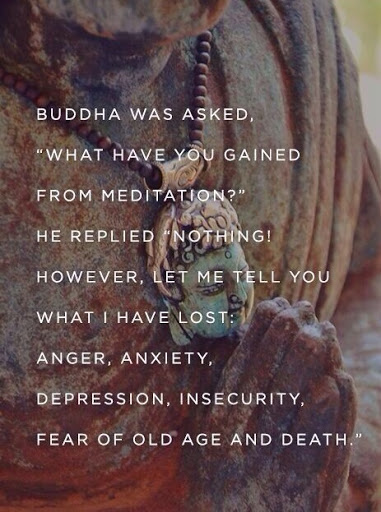
3. “When the student is ready, the teacher will appear.”

4. “The less you respond to negative people, the more peaceful your life will become.”
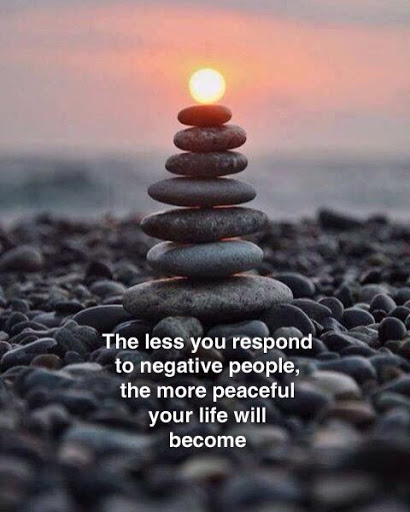
5. “Health is the greatest gift, contentment is the greatest
wealth, A trusted friend is the best relative, liberated mind is the
greatest bliss.”

6. “The thought manifests as the word: the word manifests as the
deed: the deed develops into character. So watch the thought and its
ways with care, and let it spring from love born out of concern for all
beings.”
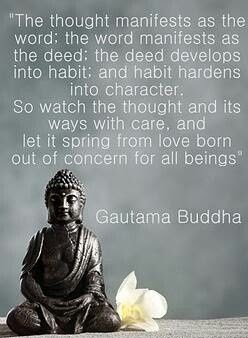
7. “Do not learn how to react learn how to respond.”
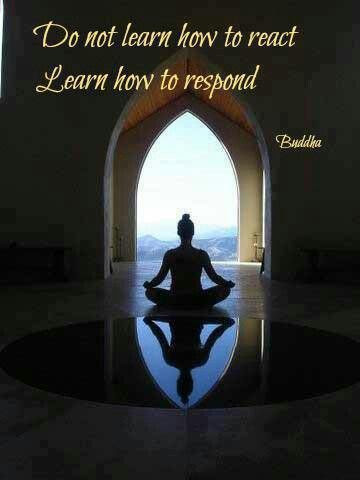
8. “If your compassion does not include yourself, It is incomplete.”
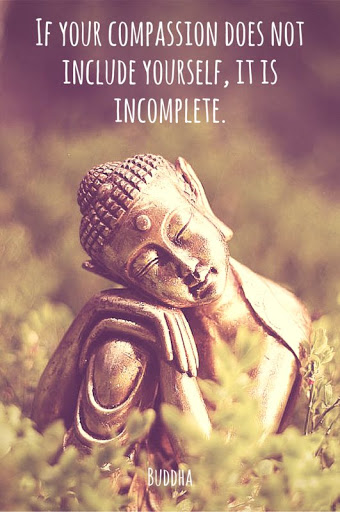
9. “Everything that has a begining has an ending.
Make your peace with that and all will be well.”

10. “If anything is worth doing, do it with all your heart.”

11. “Your worst enemy cannot harm you as much as your own unguarded thoughts.”

12. “The root of suffering is attachment.”

13. “Holding onto anger is like drinking poison and expecting the other person to die.”
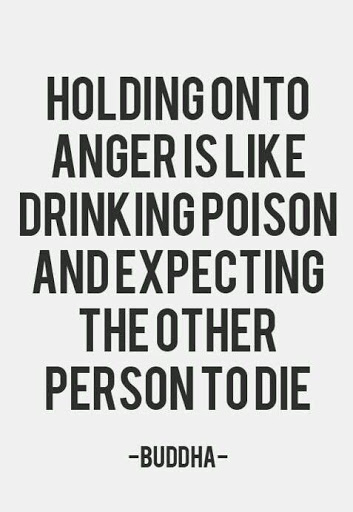
14. “All that we are is the result of what we have thought.”

15. “Do not dwell in the past, do not dream of the future, concentrate the mind on the present moment.”

16. “What you think you become, what you feel, you attract. what you imagine, you create.”

17. “Nothing can harm you as much as your own thoughts unguarded.”

18. “Relax nothing is in control.”- Buddhist Meditation quotes by Lord Buddha.

20. “The trouble is you think you have time.”

21. “Your work is to discover your world and then with all your heart give yourself to it.”

22. “Believe nothing, no matter where you read it or who has
said it, not even if i have said it. Unless it agrees with your own
reason and your own common sense.”
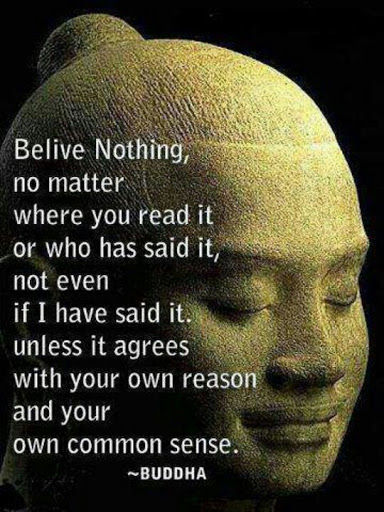
23. “Do not dwell in the past, do not dream of the future, concentrate the mind on the present moment.”

24. “On the long journey of human life… Faith is the best of companions.”
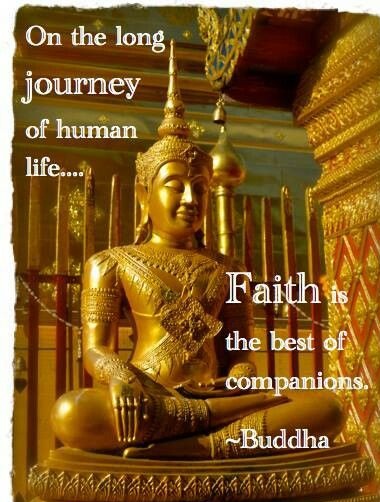
25. “To understand everything is to forgive everything.”
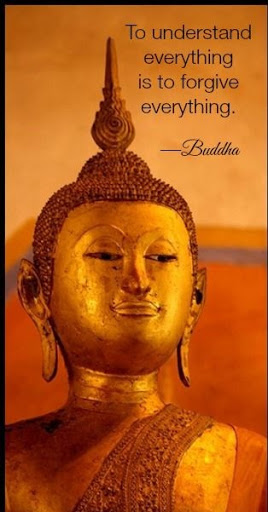
26. “Holding onto anger is like drinking poison and expecting the other person to die.”

27. “No one saves us but ourselves. No one can and no one may. We ourselves must walk the past.”

28. “There is no path to happiness: Happiness is the path.”

29. “No matter how hard the past, you can always begin again.”
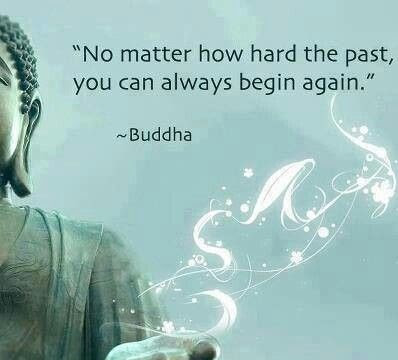
30. “If you want to fly, give upeverything yhat weighs you down.”

31. Short life quotes of Buddha- “you only lose what you cling to.”
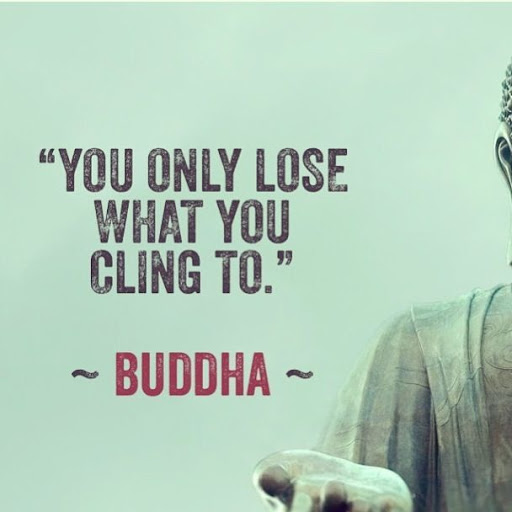
32. “when we meet real tragedy in life, we can react in two
ways- Either by losing hope and falling into self-destructive habits or
by using the challenge to find our inner strength.”
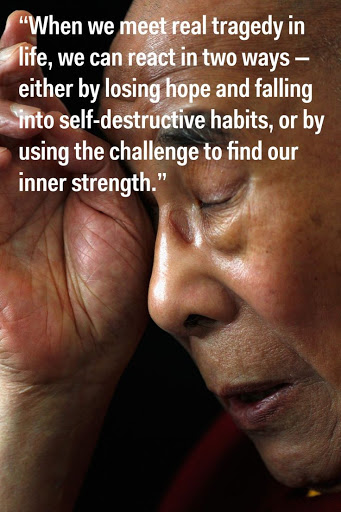
33. Buddha meditation quotes – “Nothing can harm you as much as your own thoughts unguarded.”
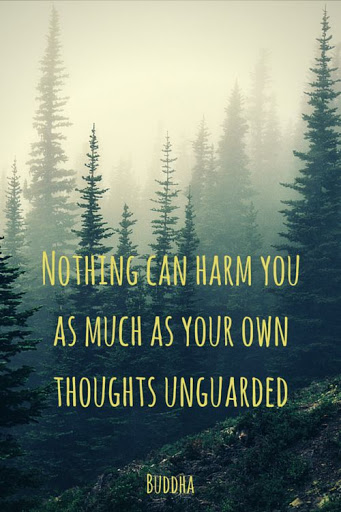
34. “Don’t rush anything. When the time is right, it’ll happen..”

35. “The whole secret of existence is to have no fear.”
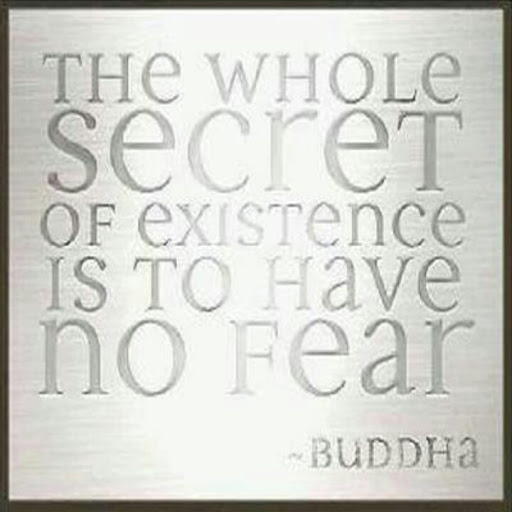
36. Real life quotes from Gautama Buddha – “Be kind to all creatures; this is the true religion.”

37. “Those who are free of resentful thoughts surely find peace.”
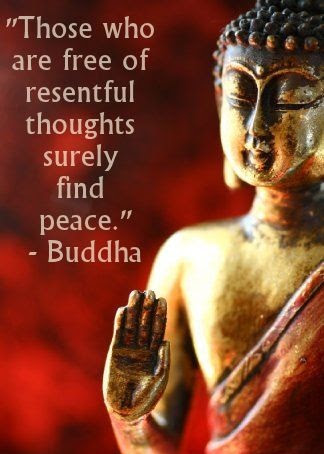
38. “No one saves us but ourselves. No one can and no one may. We ourselves must walk the path.”
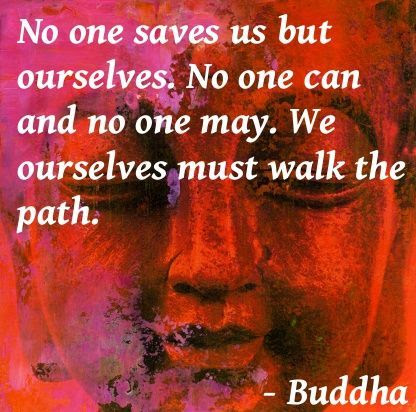
39. “Believe nothing, no matter where you read it or who has said it, not even if i have said it, unless it agrees with your own reason and your own common sense.”
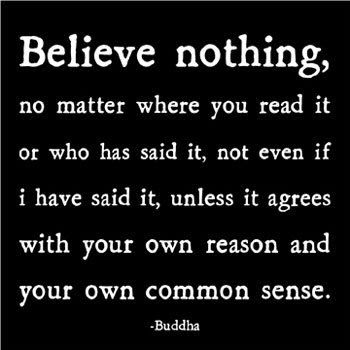
40. “It is during our darkest moments that we must focus to see the light”

41. “Quiet the mind, and the soul will speak.”

42. Inspirational quotes on karma by Buddha – “Be patient everything comes to you in the right moment.”

43. “if your compassion does not include yourself, it is incomplete.”

44. “Each morning we are born again. What we do today is what matters most.”

45. “A man who conquers himself is greater than one who conquers a thousand men in a battle.”

46. “All human unhappiness comes from not facing reality squarely, exactly as it is.”

47. “It is better to be hated for what you are than to be loved for what you are not.”

48. “He who does not understand your silence will probably not understand your words.”

49. “You will not be punished for your anger, you will be punished by your anger.”

50. “Happiness does not depend on what you haveor who you are it solely relies on what you think.”

51. “Happiness or sorrow – “whatever befalls you, walk on untouched, unattached.”
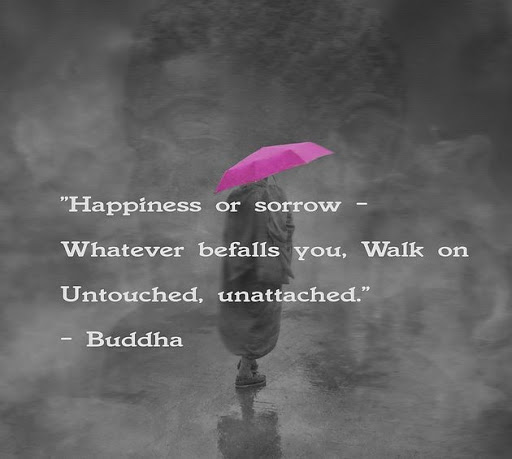
https://i.pinimg.com/736x/58/1d/b7/581db7e0188a4b1dd3877792f50773d1–krishna-painting-buddha-painting.jpg
“Freedom and happiness are found in the flexibility and ease with which we move through change.”
“There is no fire like passion
No crime like hatred,
No sorrow like separation,
No sickness like hunger,
And no joy like the joy of freedom. ”

“He who causes suffering shall suffer. There is no escape.”
“We are formed and molded by our thoughts. Those whose minds are shaped by selfless thoughts give joy when they speak or act.”
“I
knew that most people never see this reality because they attach to the
material aspect of the world. Illusions of self and other fill their
vision. I also realized there are those with little dust limiting their
vision.”
”Every experience, no matter how bad it seems, holds within a blessing of some kind. The goal is to find it.”
“Your mind is a powerful thing. When you filter it with positive thoughts, your life will start to change.”
”Have compassion for all beings, rich and poor alike; each has their suffering. Some suffer too much, others too little.”
”
The way to happiness is: keep your heart free from hate, your mind from
worry. Live simply, give much. Fill your life with love. Do as you
would be done by.”

“Sometimes
it’s better to be kind than to be right. We do not need an intelligent
mind that speaks, but a patient heart that listens. You will not be
punished for your anger, you will be punished by your anger”
” Pain is certain, suffering is optional.”
” Happiness will never come to those who fail to appreciate what they already have.”
 http://www.tipitaka.org/search
http://www.tipitaka.org/search
http://www.tipitaka.org/cst4
“You can search throughout the entire universe for someone who is more
deserving of your love and affection than you are yourself, and that
person is not to be found anywhere. You yourself, as much as anybody in
the entire universe, deserve your love and affection.”
”Do not judge yourself harshly. Without mercy for ourselves we cannot love the world.”
” Change is never painful, only the resistance to change is painful”
”One moment can change a day, One day can change a life and One life can change the world”
“Do not learn how to react. Learn how to respond.”
Harm no other beings. They are just your brothers and sisters.”
”Forgive and be free. Forget that you have forgiven and be freer.”
”It is your mind that creates the world.”
”When
you move your focus from competition to contribution life becomes a
celebration. Never try to defeat people, just win their hearts.”
“If you cannot find a good companion to walk with, walk alone, like an
elephant roaming the jungle. It is better to be alone than to be with
those who will hinder your progress.”
”Do not speak - unless it improves on silence.”
”The
world is a looking glass. It gives back to every man a true reflection
of his own thoughts. Rule your mind or it will rule you.”
”Serenity comes when you trade expectations for acceptance.”
- Gautama Buddha the Awakened One with Awareness
Ashoka
“No society can prosper if it aims at making things easier-instead it should aim at making people stronger.”
“Let all listen, and be willing to listen to the doctrines professed by others.”
”It is forbidden to decry other sects; the true believer gives honour to whatever in them is worthy of honour.”
”When
an unconquered country is conquered, people are killed… . That the
beloved of the Gods finds very pitiful and grievous. … If anyone does
him wrong, it will be forgiven as far as it can be forgiven… . The
beloved of the Gods considers that the greatest of all victories is the
victory of righteousness.”
“May the partisans of all doctrines in
all countries unite and live in a common fellowship. For all alike
profess mastery to be attained over oneself and purity of the heart.”
“He
who does reverence to his own sect, while disparaging the sects of
others with intent to enhance the glory of his own sect, by such conduct
inflicts the severest injury on his own sect.”
- Ashoka
Learning Buddha’s Word By Own Dialects Or Magadhi?
It should be Magadhi.
The Original Language of the Buddha and His Teachings
The languages used in Hela Diva in Buddha’s period
Magahi language
Buddha’s Birthday is occasionally designated as a public holiday in North Korea and is known as Chopail (Korean: 초파일).[25] Designation of traditional Korean holidays as public holidays in North Korea are determined by the Cabinet a few days before the traditional holiday begins.[25] Buddha’s Birthday is a traditional festival in Korean culture and was celebrated in Korea long before the division of the country as a result the festival is also celebrated in North Korea by the country’s Buddhist population.[26]
Philippines
Around 2% of the population in the Philippines is Buddhist. Buddha’s Birthday celebrated as Vesak (Tagalog: Araw ng Bisyak) is not a public holiday but is celebrated by the small community of Buddhists in the country.[27] The bathing of the Buddha statue is a significant part of the celebrations in the country.[28]
Singapore
In Singapore, Buddha’s birthday is celebrated as Vesak or Vesak Day and is a public holiday in the country. Buddhist temples hold celebrations and are decorated with Buddhist flags and flowers. Devotees also bring offerings to the temples.[29]
South Korea
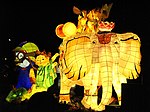
Buddha lantern parade in Daegu, Korea
In South Korea, the birthday of Buddha is celebrated according to the Korean lunar calendar and is a public holiday. This day is called 석가탄신일 (Seokga tansinil), meaning “Buddha’s birthday” or 부처님 오신 날
(Bucheonim osin nal) meaning “the day when the Buddha came”. Lotus
lanterns hang in temples throughout the month and lanterns are hung in
homes and in the streets.[30] On the day of Buddha’s birth,
many temples provide free meals and tea to all visitors. The breakfast
and lunch provided are often sanchae bibimbap.
Buddha’s Birthday is a popular holiday and folk celebration in Korea
and is often celebrated by people of all religious beliefs.[30]
Sri Lanka

Vesak Thorana in Piliyandala, Sri Lanka
In Sri Lanka, Buddha’s Birthday is celebrated as Vesak and is a public holiday celebrated on the first full moon day of the month of May. Its date is determined by the Buddhist lunar calendar.
People engage in religious observances and decorate houses and streets
with candles and paper lanterns as well as bamboo-framed lanterns.
Dansalas is practised and refers to the free offering of food and drink
to people. Bakthi Gee – devotional songs are sung and pandols
which are decorative gateways are erected throughout the country.
Temples around the country also hold celebrations and devotees bring
offerings and burn incense.[31] Electric light displays
that depict stories from the Buddha’s life are also a notable part of
Vesak celebrations in the country.[32]
Taiwan
In
Taiwan, Buddha’s birthday is a national anniversary. Devotees pour
fragrant water over Buddha statues to symbolise the beginning of a fresh
start in life.[33]
Thailand
In Thailand, Buddha’s birthday is celebrated as Visakha Puja and is a public holiday. People gather at temples to hear sermons, give donations and chant prayers.[34]
Vietnam
Buddha’s
birthday is celebrated throughout Vietnam. Many Buddhist temples hold
celebrations that attract people from around the country and pagodas
around the country are decorated.[35] From 1958 to 1975, Lễ Phật Đản,
the birthday of Buddha (on the 8th day of the 4th month in the Chinese
lunar calendar) was recognized as a national public holiday in South Vietnam,[36] enjoyed with float and lantern parade on the streets.
Festivities outside AsiaAustralia
In Sydney,
Buddha’s birthday is celebrated at the Nan Tien Temple in Wollongong
Australia and another celebration also organised by Nan Tien Temple is
held at Darling Harbour
which features Buddha’s birthday ceremony, a variety of vegetarian food
and culture stalls and multicultural performances from China, Japan,
Vietnam, Korea, India, Malaysia, Sri Lanka, Australia and other
cultures.[37][38] Other temples in the Fo
Guang Shan Nan Tien Temple group in Australia on the eighth day of the
fourth month of the China lunar calendar also hold celebrations.[39] In Brisbane, Buddha Birth Day Festival is held annually and features a variety of pan-Asian food and performances from multicultural acts.[40] It is a weekend-long festival which draws over 200 000 visitors.[41] In Melbourne, the weekend-long festival called Buddha’s Day and Multicultural Festival is held at Federation Square around April/May.[42] In Perth, a two-day celebration also known as Buddha’s Day and Multicultural Festival is held at Langley Park.[43] Local Buddhist temples and smaller towns around the country such as Bendigo, Victoria also hold celebrations.[44]
On the Australian external territory of Christmas Island,
Buddha’s Birthday is celebrated as “Vesak Day” and is celebrated
alongside many other celebrations common in Australia and Malaysia as
well as local celebrations of the island.[45][46]
Brazil
Vesak (Hanamatsuri) is widely known and celebrated in Brazil due to the country’s large Japanese community.
Hanamatsuri has grown in popularity and also attracts interest from the
wider non-Japanese Brazilian population. As a result, Hanamatsuri has
become a consumerist culture phenomenon in the country and is sometimes locally known as Festa das Flores.[47][48] Hanamatsuri is celebrated in the São Paulo neighbourhood of Liberdade which is home to the largest Japanese community outside of Japan.[49]
Hanamatsuri celebrations in Liberdade began in 1966 and includes a
parade on Galvão Bueno street and celebrations at the suburb’s major
shopping centre, Liberdade Plaza, among other things.[48][49]
Canada
In Toronto,
three Buddhist temples representing the three main branches of Buddhism
organize an annual event known as Vesak: Buddha’s Birthday.[50] It is held at Mississauga
Celebration Square and features a number of Buddhist themed events and
activities as well as cultural acts from Asia, including China, Sri
Lanka and Vietnam.[51][52][53]
United States of America
Celebration
of Buddha’s Birthday in the United States differ from community to
community, depending on ethnicity and nationality.
The Japanese celebration on 8 April has been significant in the Bay Area for some decades. In 1968 the first circumambulation
of Mt. Tamalpais to celebrate Buddha’s Birthday was conducted. Starting
in 1969 at Tassajara Zen Mountain Center, Hana-Matsuri was celebrated
each spring. Dressed in formal black robes, the roughly 70 monks and
students formed a formal procession to the Horse Pasture with the leader
periodically ringing a small, clear bell. A temporary stone altar was
built under a huge oak tree in a gorgeous field of green grass and
abundant wildflowers; a small statue of a baby Buddha was placed upon it
in a metal basin. Then each person would in turn approach the altar,
ladle one thin-lipped bamboo dipperful of sweet green tea over the
statue, bow, and walk to one side.[54]
In New York, the International Lotus Lantern Parade has been a notable and successful annual event held at Union Square Park.
The event celebrates the Buddha’s birthday and Yeon Deung Hoe (연등회), a
Korean lantern celebration that is held during Vesak. The festival
features a number of Buddhist themed events and is started off by
numerous Buddhist centres of Japanese, Korean and Sri Lankan origins for
example.[55][56]
See also
References
- Official Site of Korea Tourism Org. National Holidays
- UNESCO, Lumbini in Nepal is the birthplace of the Lord Buddha, Gethin Foundations, p. 19, which states that in the mid-3rd century BCE the Emperor Ashoka
determined that Lumbini was Gautama’s birthplace and thus installed a
pillar there with the inscription: “… this is where the Buddha, sage
of the Śākyas (Śākyamuni), was born.”
- For
instance, Gethin Foundations, p. 14, states: “The earliest Buddhist
sources state that the future Buddha was born Siddhārtha Gautama (Pali
Siddhattha Gotama), the son of a local chieftain—a rājan—in Kapilavastu
(Pali Kapilavatthu) what is now the Indian–Nepalese border.” However,
Professor Gombrich (Theravāda Buddhism, p. 1) and the old but
specialized study by Edward Thomas, The Life of the Buddha, ascribe the
name Siattha/fitta to later sources.
- https://www.diamondway-buddhism.org/buddhism/buddha/
- https://www.officeholidays.com/religious/buddhist/buddhas_birthday.php
- Camaron Kao (14 May 2012), “Thousands of believers mark Buddha’s birthday”, China Post, archived from the original on 16 June 2013
- Ko Shu-Ling (May 9, 2011), “Sakyamuni Buddha birthday celebrated”, Taipei Times,
The
legislature approved a proposal in 1999 to designate the birthday of
Sakyamuni Buddha — which falls on the eighth day of the fourth month of
the lunar calendar — a national holiday and to celebrate the special
occasion concurrently with International Mother’s Day, which is
celebrated on the second Sunday of May.
- “বুদ্ধ পূর্ণিমা”, সিলেবাসে নেই, দৈনিক কালের কণ্ঠ; ১১ মে ২০১১ খ্রিস্টাব্দ। পৃ. ৪। পরিদর্শনের তারিখ: ১৭ মে ২০১১ খ্রিস্টাব্দ।
- http://m.ntvbd.com/religion-and-life/129443/আজ-শুভ-বুদ্ধ-পূর্ণিমা
- “Archived copy”. Archived from the original on 11 March 2016. Retrieved 11 March 2016.
- http://buddhism.about.com/od/buddhistholidays/ig/Images-of-Vesak/Buddhas-BDay-China.htm#step-heading
- http://www.hong-kong-traveller.com/buddha-birthday.html#.VuJye_l94dU
- https://publicholidays.asia/macau/buddhas-birthday/
- https://ebooks.adelaide.edu.au/f/fa-hien/f15l/chapter20.html
- http://www.aboutbuddha.org/english/life-of-buddha-4.htm/
- http://www.officeholidays.com/countries/india/
- https://books.google.ca/books?id=Us9wbjmvXfgC&pg=PT32&dq=sujata++bakraur&hl=en&sa=X&redir_esc=y#v=onepage&q=sujata%20%20bakraur&f=false
- https://www.justlanded.com/english/Indonesia/Indonesia-Guide/Culture/Vesak-festival-in-Indonesia
- http://www.ibtimes.co.uk/indonesia-vesak-day-buddhas-birthday-borobudur-worlds-biggest-buddhist-temple-photos-1504198
- https://www.meetup.com/pl-PL/buddhism-613/events/59639372/?_cookie-check=q6MkUIbiHx5eZP04
- https://books.google.com.au/books?id=PcvA373XEJwC&printsec=frontcover#v=onepage&q&f=false
- https://www.eternal-landscapes.co.uk/buddhas-birthday-celebrations-ulaanbaatar/
- http://www.buddhistchannel.tv/index.php?id=25,1239,0,0,1,0
- Dunipace, Sujal Jane (May 2003). “Nepal’s Buddha Jayanti Celebration”. ECS Nepal. Archived from the original on 18 December 2011. Retrieved 9 May 2013.
- Understanding
North Korea: Totalitarian dictatorship, Highly centralized economies,
Grand Socialist Family. 길잡이미디어. 2015. p. 385.
- Encyclopedia of Korean Seasonal Customs: Encyclopedia of Korean Folklore and Traditional Culture Vol. 1. 길잡이미디어. 2014. p. 147. ISBN 8992128924.
- http://www.undv2014vietnam.com/en/thong-diep/messages-by-heads-of-states-embassy-and-foreign-diplomatic-organisations-in-vietnam/dai-su-cong-hoa-philippines/
- “Archived copy”. Archived from the original on 11 March 2016. Retrieved 2016-03-11.
- http://publicholidays.sg/vesak-day/
- Encyclopedia of Korean Seasonal Customs: Encyclopedia of Korean Folklore and Traditional Culture Vol. 1. 길잡이미디어. 2014. p. 150. ISBN 8992128924.
- https://www.lanka.com/events/vesak-festival/
- http://sputniknews.com/voiceofrussia/news/2014_05_14/Buddhas-birthday-Buddhists-worldwide-celebrate-peace-and-harmony-on-Vesak-day-6360/
- http://www.huffingtonpost.com/2012/05/05/vesak-how-buddhas-birthda_n_1478896.html
- http://buddhism.about.com/od/buddhistholidays/ig/Images-of-Vesak/Visak-Puja-Thailand.htm
- http://goseasia.about.com/od/eventsfes6/tp/vn_festivals.01.htm
- Niên biểu lịch sử Phật giáo Việt Nam Archived 15 November 2012 at the Wayback Machine.
- http://www.nantien.org.au/en/events/buddhas-birthday-festival
- http://blog.apc.edu.au/2013/05/buddhas-birthday-celebration.html
- “Buddha’s Birthday Education Project”. International Buddhist Progress Society. Retrieved 12 January 2014.
- http://www.buddhabirthdayfestival.com.au/
- “Buddha Birthday Festival”. Buddha’s Light International Association, Chung Tian Temple. Archived from the original on 26 January 2014. Retrieved 26 January 2014.
- “Buddha’s Birthday and Multicultural Festival”. Buddha’s Light International Association Victoria. Retrieved 31 March 2014.
- “Archived copy”. Archived from the original on 14 March 2016. Retrieved 2016-03-06.
- http://www.bendigotourism.com/whats-on/whats-on-this-month/event/3258-vesak-festival-of-light
- https://www.christmas.net.au/visitor-guide/files/inc/Christmas-Island-Visitors-Guide.pdf
- “Archived copy”. Archived from the original on 15 October 2015. Retrieved 21 October 2015.
- https://books.google.com.au/books?id=pCqTDAAAQBAJ&printsec=frontcover#v=onepage&q&f=false
- Negawa, Sachio (11 October 2007). “Chapter 8: The Formation and Development of Bairro Oriental (3) - The Emergence of a New “Tradition““. Discover Nikkei. Retrieved 17 February 2018.
- “Hanamatsuri”. CulturaJaponesa.com.br. Retrieved 17 February 2018.
- http://www.vesakcelebration.com/
- http://www.sumeru-books.com/tag/mississauga/
- http://www.mississauga.com/news-story/4518929-buddhists-to-mark-buddha-s-birthday-at-celebration-square/
- https://culture.mississauga.ca/event/celebration-square/vesak-buddha%E2%80%99s-birthday-celebration
- http://www.japanese-city.com/calendar/events/index.php?eID=32066
- http://nycviewsandnews.blog.com/2012/05/07/lotus-lantern-parade/
- http://interfaithcenter.org/archives/5318
Best Happy Birthday Meme Collection Birthday Greetings for friends
Further reading
- The Folkloric Study of Chopail (Buddha’s Birthday), written by Prof. M.Y.Pyeon. Produced by Minsokwon in Seoul Korea 2002.
External links
The exact date of Buddha’s Birthday is based on the Asian lunisolar calendars.
The date for the celebration of Buddha’s Birthday varies from year to
year in the Western Gregorian calendar, but usually falls in April or
May. In leap years it may be celebrated in June.
Date
The exact date of Buddha’s Birthday is based on the Asian lunisolar calendars and is primarily celebrated in Baisakh month of the Buddhist calendar and the Bikram Sambat Hindu calendar, and hence it is also called Vesak. In modern-day India and Nepal, where the Historical Buddha lived, it is celebrated on the full moon day of the Vaisakha
month of the Buddhist calendar. In Theravada countries following the
Buddhist calendar, it falls on a full moon Uposatha day, typically in
the 5th or 6th lunar month. In China and Korea, it is celebrated on the
eighth day of the fourth month in the Chinese lunar calendar. The date
varies from year to year in the Western Gregorian calendar, but usually
falls in April or May. In leap years it may be celebrated in June. In
Tibet, it falls on the 7th day of the fourth month of the Tibetan
calendar (in May).
South and Southeast Asia and Mongolia
In South Asian and Southeast Asian countries as well as Mongolia, Buddha’s birthday is celebrated on the full moon day of the Vaisakha month of the Buddhist calendar and the Hindu calendar,
which usually falls in April or May month of the Western Gregorian
calendar. The festival is known as Buddha Purnima, as Purnima means full
moon day in Sanskrit. It is also called is Buddha Jayanti, with Jayanti
meaning birthday in Sanskrit Language.
The corresponding Western Gregorian calendar dates varies from year to year:
- 2017: May 10
- 2018:
April 29 (Sri Lanka, Cambodia, Myanmar, Bangladesh), April 30 (Nepal,
India), May 29 (Singapore, Thailand, Malaysia and Indonesia)[5]
- 2019: May 19
East Asia
In many East Asian countries Buddha’s Birth is celebrated on the 8th day of the 4th month in the Chinese lunar calendar (in Japan since 1873 on April 8 of the Gregorian calendar), and the day is an official holiday in Hong Kong, Macau and South Korea. The date falls from the end of April to the end of May in the Gregorian calendar.
The primarily solar Gregorian calendar date varies from year to year:
- 2017: May 3
- 2018: May 22
- 2019: May 12
- 2020: April 30
Taiwan
In 1999 the Taiwanese government set Buddha’s birthday as the second Sunday of May, the same date as Mother’s Day.[6][7]
Japan
As a result of the Meiji Restoration,
Japan adopted the Gregorian calendar in lieu of the Chinese lunar
calendar in 1873. However, it took approximately until 1945, the end of World War II,
for religious festivities to adopt the new calendar. In most Japanese
temples, Buddha’s birth is now celebrated on the Gregorian calendar date
April 8; only a few (mainly in Okinawa) celebrate it on the orthodox
Chinese calendar date of the eighth day of the fourth lunar month.
Celebrations in each country Asia

Lotus Lantern Festival celebrating Buddha’s Birthday, in South Korea

Floating lanterns on a lake for Buddha’s Birthday in Jaffna, Sri Lanka
Bangladesh
In
Bangladesh the event is called বুদ্ধ পূর্ণিমা or Buddho Purnima. On the
day of proceeding Purnima Buddhist monks and priests decorate temple in
colourful decorations and candles. On the day of the festival the
President and Prime Minister deliver speeches about the history and
importance of Buddhism and religious harmony in the country. From noon
onwards large fairs are held in and around temples and viharas
selling bangles, food (largely vegetarian), clothes, toys and
conducting performances of Buddha’s life, Buddhist music teaching about
the Dharma and the 5 precepts. Later on Buddhists attend a congression
inside the monastery where the chief monk would deliver a speech
discussing the Buddha and the 3 jewels and about living the ideal life
after which a prayer to the buddha would be conducted and people would
then light candles and recite the three jewels and 5 precepts.[8][9]
Cambodia
In Cambodia, Buddha’s Birthday is celebrated as Visak Bochea and is a public holiday
where monks around the country carry flags, lotus flowers, incense and
candles to acknowledge Vesak. People also take part in alms giving to
the monks.[10]
China
In China, celebrations often occur in Buddhist temples where people light incense and bring food offerings for the monks.[11] In Hong Kong, Buddha’s birthday is a public holiday.
Lanterns are lit to symbolise the Buddha’s enlightenment and many
people visit the temple to pay their respects. The bathing of the Buddha
is a major feature of Buddha’s birthday celebrations in the city.[12] The festival is also a public holiday in Macau.[13]
India
India
is the land where the Buddha attained enlightenment (nirvana) at
Bodhgaya and established Buddhism. Buddha spent majority of his life in
what is now modern day India. Some of the holiest sites associated with
Buddha’s life include Bodhgaya (place of enlightenment), Sarnath (site of first sermon), Sravasti and Rajgir (site where Buddha spent the greater part of his monastic life and delivered majority of his discourses), and Kushinagar (site where Buddha attained Parinirvana and passed away)[14][15] Under Emperor Ashoka, Buddhism spread from India to other nations.[4] Buddha Purnima or Buddha Jayanthi in South India or Tathagata is a public holiday in India.The public holiday for Buddha purnima in India was initiated by Bhimrao Ramji Ambedkar when he was the minister of social justice [16] It is celebrated especially in Sikkim, Ladakh, Arunachal Pradesh, Bodh Gaya, various parts of North Bengal such as Kalimpong, Darjeeling, and Kurseong, and Maharashtra (where 73% of total Indian Buddhists live) and other parts of India as per Indian calendar. Buddhists go to common Viharas to observe a rather longer-than-usual, full-length Buddhist sutra, akin to a service. The dress code is pure white. Non-vegetarian food is normally avoided. Kheer,
a sweet rice porridge is commonly served to recall the story of Sujata,
a maiden who, in Gautama Buddha’s life, offered the Buddha a bowl of
milk porridge.
Informally called “Buddha’s Birthday”, it actually commemorates the
birth, enlightenment (nirvāna), and death (Parinirvāna) of Gautama
Buddha in the Theravada tradition. Tibetans in exile remember Buddha’s
birthday on the 7th day of the Saga Dawa month (fourth month of the
Tibetan calendar), which culminates with Buddha’s parinirvana
celebrations on the full moon day.
It is said that the Buddha originally followed the way of asceticism
to attain enlightenment sooner, as was thought by many at that time. He
sat for a prolonged time with inadequate food and water, which caused
his body to shrivel so as to be indistinguishable from the bark of the
tree that he was sitting under. Seeing the weak Siddhartha Gautama, a
woman named Sujata placed a bowl of “Kheer” in front of him as an
offering.[17] Realizing that without food one can do
nothing, the Buddha refrained from harming his own body. Thereafter, he
would go on to attain nirvana.
Indonesia
In Indonesia, Buddha’s Birthday is celebrated as Waisak and is a public holiday. A large procession beginning in Mendut in Java ends at Borobudur – the largest Buddhist temple in the world.[18][19]
Japan

Hanamatsuri in Japan
In Japan, Buddha’s Birthday is known as Kanbutsu-e (Japanese: 灌仏会) or Hanamatsuri (Flower Festival) (Japanese: 花祭り)
and is held on April 8. Buddha’s birth is also celebrated according to
the Buddhist calendar but is not a national holiday. On this day, all
temples hold 降誕会 (Gōtan-e), 仏生会 (Busshō-e), 浴仏会 (Yokubutsu-e), 龍華会
(Ryūge-e) and 花会式 (Hana-eshiki). Japanese people pour ama-cha (a beverage prepared from a variety of hydrangea)
on small Buddha statues decorated with flowers, as if bathing a newborn
baby. The tradition of bathing the Buddha originated in China and was
introduced to Japan where it was first held in Nara in 606.[20] Lion dancing is also a major tradition practiced during Buddha’s Birthday and has become associated with the festival in Japan.[21]
Malaysia
In Malaysia, Buddha’s Birthday is celebrated as Wesak Day and is a public holiday celebrated by the sizeable minority Buddhist population
in the country. Temples across the country are decorated and caged
animals are set free. People engage in prayers, chanting and giving
across the country.[10]
Mongolia
In Mongolia, Buddha’s Birthday is celebrated as Ikh Duichen and its date is determined by the Mongolian lunar calendar.[22]
As a result, the date falls in line with celebrations of Buddha’s
Birthday/Vesak in South and Southeast Asian countries as opposed to
neighbouring East Asian countries. While not a public holiday the
festival is popularly celebrated by many Mongolian Buddhists.[23]
Myanmar
In Myanmar, Buddha’s Birthday is celebrated as Full Moon of Kason and is a public holiday. It is celebrated by watering the Bodhi tree and chanting. In large pagodas music and dance is also performed as part of the celebrations.[10]
Nepal

Buddha statues at Swayambhu in Nepal
In
Nepal, the birthplace of Buddha, his birthday is celebrated on the full
moon day of May. The festival is known by various names, Buddha
Jayanti, Buddha Purnima, Vaishakh Purnima, Saga Dawa, and Vesak. Purnima means full moon day in Sanskrit. Among the Newars
of Nepal, especially from the Shakya clan of Newars, it is of great
importance because they consider it as a continuation of the sage of the
Śākyas- the clan that Lord Buddha’s family belonged to. Thus, they
celebrate the festival which is in their language known as Swānyā Punhi
(स्वांया पुन्हि), the full moon day of flowers.[24] The day marks not just the birth of Shakyamuni Gautam Buddha but also the day of his Enlightenment and Mahaparinirvana.
The
event is celebrated by gentle and serene fervour, keeping in mind the
very nature of Buddhism. People, especially women, go to common Viharas to observe a rather longer-than-usual, full-length Buddhist sutra, as something like a service. The usual dress is pure white. Non-vegetarian food is normally avoided. Kheer, a sweet rice porridge is commonly served to recall the story of Sujata.
North Korea

The Buddha Triumphs Over the Demon Mara
Asian Art Museum
42.6K subscribers
The
Bhante Seelawimala of the American Buddhist Seminary, tells the story
of how the Buddha attained enlightenment with the use of artworks from
the Asian Art Museum’s collection.
https://www.youtube.com/watch?v=kFPm2vuw00I
BUDDHIST STORIES: THE EIGHT VEGAN WAYS OF BUDDHIST LIFE - Aug 5, 2015
Quan Yin
Published on Apr 28, 2017
International Gathering with Supreme Master Ching Hai - Europe, Aug 5, 2015
Category
Nonprofits & Activism
License
Standard YouTube License
Music in this video
Learn more
Song
Strive And Explore-Megatrax
Artist
Megatrax - Megatrax
Album
MX291 - Inspiration
Licensed by
AdRev for a 3rd Party; UMPI, AdRev Publishing, and 3 Music Rights Societies
International Gathering with Supreme Master Ching Hai - Europe, Aug 5, 2015
3) Classical Prakruti,
https://www.youtube.com/watch?v=HBmkj1-IPsc
Story of Gautama Buddha with Prakruti
Subrata SINGHA
Published on Apr 29, 2017
जो नित्य एवं स्थाई प्रतीत होता है, वह भी विनाशी है। जो महान प्रतीत होता
है, उसका भी पतन है। जहाँ संयोग है वहाँ विनाश भी है। जहाँ जन्म है वहाँ
मरण भी है। ऐसे सारस्वत सच विचारों को आत्मसात करते हुए महात्मा बुद्ध ने
बौद्ध धर्म की स्थापना की जो विश्व के प्रमुख धर्मों में से एक है।
Category
People & Blogs
जो नित्य एवं स्थाई प्रतीत होता है, वह भी विनाशी है। जो महान प्रतीत होता है, उसका भी पतन है। जहाँ संयोग है वहाँ विनाश भ…
4)Clasical Pali
https://www.youtube.com/watch?v=G7GYzxOYixo
Dhammapada Pali, Hindi and English text
Bodhimaggo Vihara
Published on Mar 31, 2016
Chant by : Ven Seelavansa Thero
Category
People & Blogs
Chant by : Ven Seelavansa Thero

The Buddha Triumphs Over the Demon Mara
Asian Art Museum
42.6K subscribers
The
Bhante Seelawimala of the American Buddhist Seminary, tells the story
of how the Buddha attained enlightenment with the use of artworks from
the Asian Art Museum’s collection.
https://www.revolvy.com/main/index.php?s=List+of+Buddhist+temples
Filed under:
General
Posted by:
site admin @ 3:51 am
List of Buddhist temples
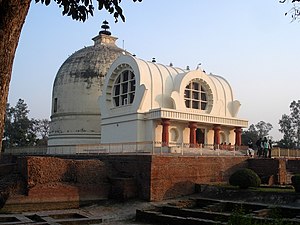
The Parinirvana Temple with the Parinirvana Stupa at Kushinagar, India where Buddha attained Parinirvana after his death
This is a list of Buddhist temples, monasteries, stupas, and pagodas for which there are Wikipedia articles, sorted by location.
AustraliaAustralian Capital Territory
New South Wales
Queensland
South Australia
Victoria
Western Australia
Bangladesh
Bhutan
Bumthang
- Kurjey Lhakhang - one of Bhutan’s most sacred temples - image of Guru Rinopche enshrined in rock.
Paro
- Rinpung Dzong
- Paro Taktsang (Tiger’s Nest) - perched on a 1,200 meter cliff, this is one of Bhutan’s most spectacular monasteries.
Punakha
Phobjika
Thimphu
Cambodia
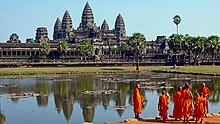
Prasat Angkor Wat

Wat Preah Keo Morokot

Wat Phnom.
Angkor
Kampong Thom
Phnom Penh
Pursat
CanadaBritish Columbia
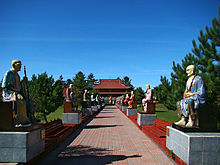
Monastère Bouddhiste de Tam Bao Son, Canton d’Harrington, Laurentides, Québec
Nova Scotia
Ontario
QuebecPeople’s Republic of China
Anhui
Beijing
Fujian
Guangdong
Hainan
Hebei
Henan
Hohhot
Hubei
Hong Kong
Jiangsu
Jiangxi
Ningxia
Quanzhou
Shaanxi
Shandong
Shanghai
Shanxi
Sichuan
Tibet Autonomous Region
Yunnan
Zhejiang
Europe
Denmark
England
- Aruna Ratanagiri Buddhist Monastery (Harnham Buddhist Monastery), Northumberland (Thai)
- Amaravati Buddhist Monastery, Hertfordshire (Thai)
- Chithurst Buddhist Monastery (Cittaviveka), West Sussex (Thai)
- London Fo Guang Shan Temple, Marylebone, London (Chinese)
- Kadampa Buddhist Temple, Ulverston
- Mahamevnawa Buddhist Monastery, Watford, London (Sri Lankan)
- Nipponzan-Myōhōji Temple and Peace Pagoda at Willen, Milton Keynes (Japanese)
- Throssel Hole Buddhist Abbey, Northumberland
- Wat Buddhapadipa, Wimbledon, London (Thai)
- Wat Charoenbhavana, Manchester (Thai)
France
Germany
Hungary
Italy
The Netherlands Poland
Scotland
Slovakia
- Buddhist Temple of Dzogchen Community Wangdenling
Slovenia
Spain
Sweden
IndiaAndhra Pradesh
Arunachal Pradesh
Bihar
Goa
Buddhist caves exist in following places in Goa:
Buddha
idols have been found in several places, and some temples, some are
still in worship and are considered now as Hindu gods. Monasteries used
to exist in many places, and it can be seen from the names of the modern
villages. For example, Viharas have been found in modern Divachali or ancient Dipakavishaya, Lamgaon or ancient Lamagrama and many other places.
Himachal Pradesh
Jammu and Kashmir
Karnataka
Kerala
Madhya Pradesh
Maharashtra
Orissa
Sikkim
Tamil Nadu
Uttar Pradesh
West Bengal
Indonesia
Sumatra
West Java
Central Java
East Java
Bali
Israel
Japan Fukui
Fukuoka
Gifu
Hiroshima
Hyōgo
Iwate
Kagawa
Kanagawa
Kyoto
Miyagi
Nagano
Nagasaki
Nara
Osaka
- Shitennō-ji (the first Buddhist and oldest officially administered temple in Japan)
Saitama
Shiga
Shizuoka
Tochigi
Tokyo
Sensō-ji (Temple complex)
Toyama
Wakayama
Yamagata
Yamaguchi
Yamanashi
Laos
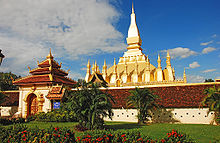
Pha That Luang
Vientiane
Luang Phrabang
Malaysia

Sri Lanka Buddhist Temple (from Lorong Timur), Sentul, Kuala Lumpur

Puu Jih Shih Temple, Sandakan, Sabah.
Kuala Lumpur
Malacca
Penang
Kelantan
Perak
Pahang
Sabah
Mongolia
Ulaanbaatar
Övörkhangai
Selenge
Myanmar

Ancient pagodas are built in the Mon style, Bagan.
Yangon Region
- Yangon (Rangoon)
Mandalay Region
- Bagan (Pagan)
- Mandalay
Rakhine State
Bago Region
- Bago
- Pyay
Mon State
Shan State
Nepal
Kapilbastu District
Kathmandu District
Mustang District
Rupandehi District
- Lumbini, birthplace of Siddhartha Gautama Buddha
New Zealand
PhilippinesDavao
Metro Manila
Russia
Singapore
South Africa
South Korea Seoul
Gyeonggi
Gangwon
North Chungcheong
South Chungcheong
North Gyeongsang
South Gyeongsang
North Jeolla
North Pyeongan
South Jeolla
Daejeon
Sri Lanka
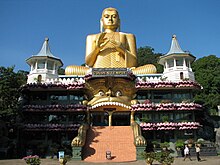
Dambulla Golden Cave Temple
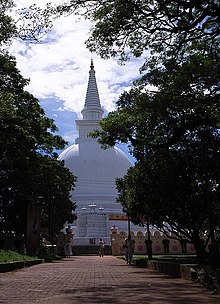
Mahiyangana Dagoba
Ampara
Anuradhapura
Badulla
Balapitiya
Colombo
Dambulla
Hambantota
Jaffna
Kandy
Kalutara
Kelaniya
Kurunegala
Madampe
Mahiyanganaya
Matale
Polgahawela
Polonnaruwa
Trincomalee
Taiwan
Tanzania
Thailand

Wat Traimit contains Golden Buddha - the world’s largest solid gold statue.
Ayutthaya
Bangkok
Chiang Mai
Chiang Rai
 https://www.revolvy.com/main/index.php?s=Pagoda
https://www.revolvy.com/main/index.php?s=Pagoda
Pagoda

Seokgatap of Bulguksa
in South Korea, built in the 8th century, made of granite. In 1966, the
Mugujeonggwang Great Dharani Sutra, the oldest extant woodblock print
and several other treasures were found in the second story of this
pagoda.
A pagoda is a tiered tower with multiple eaves, built in traditions originating as stupa in historic South Asia[1][2] and further developed in East Asia or with respect to those traditions, common to Nepal, China, Japan, Korea, Vietnam, Myanmar, India, Sri Lanka and other parts of Asia. Some pagodas are used as Taoist houses of worship. Most pagodas were built to have a religious function, most commonly Buddhist, and were often located in or near viharas. In some countries, the term may refer to other religious structures. In Vietnam and Cambodia, due to French translation, the English term pagoda is a more generic term referring to a place of worship,
although pagoda is not an accurate word to describe a Buddhist vihara.
The modern pagoda is an evolution of the stupa which originated in ancient India.[3][4][1] Stupas are a tomb-like structure where sacred relics could be kept safe and venerated.[5]
The architectural structure of the stupa has spread across Asia, taking
on many diverse forms as details specific to different regions are
incorporated into the overall design.
Etymology
One proposed etymology is from a South Chinese pronunciation of the term for an eight-cornered tower, Chinese: 八角塔, and reinforced by the name of a famous pagoda encountered by many early European visitors to China, the “Pázhōu tǎ” (Chinese: 琶洲塔), standing just south of Guangzhou at Whampoa Anchorage.[6] Another proposed etymology is Persian butkada, from but, “idol” and kada, “temple, dwelling.”[7]
Another etymology, found in many English language dictionaries, is modern English pagoda from Portuguese (via Dravidian), from Sanskrit bhagavati, feminine of bhagavat, “blessed”, from bhag, “good fortune”.
Yet
another etymology of pagoda is from the Sinhala word dāgaba which is
derived from Sanskrit dhātugarbha or Pali dhātugabbha: “relic
womb/chamber” or “reliquary shrine”, i.e. a stupa, by way of Portuguese.[8]
History

Kek Lok Si pagoda tiers labelled with their architectural styles
The origin of the pagoda can be traced to the stupa (3rd century BCE).[9] The stupa, a dome shaped monument, was used as a commemorative monument associated with storing sacred relics.[9] In East Asia, the architecture of Chinese towers and Chinese pavilions
blended into pagoda architecture, eventually also spreading to
Southeast Asia. The pagoda’s original purpose was to house relics and
sacred writings.[10] This purpose was popularized due to the efforts of Buddhist missionaries, pilgrims, rulers, and ordinary devotees to seek out, distribute, and extol Buddhist relics.[11]
On the other side, the stupa emerged as a distinctive style of Newa architecture of Nepal and was adopted in Southeast and East Asia. Nepali architect Araniko visited China and shared his skills to build stupa buildings in China.[12][13]
These buildings (pagoda, stupa) became prominent as Buddhist monuments used for enshrining sacred relics.[9]
Symbolism
Chinese iconography is noticeable in Chinese pagoda as well as other East Asian pagoda architectures. The image of Gautama Buddha in the abhaya mudrā is also noticeable in some Pagodas. Buddhist iconography can be observed throughout the pagoda symbolism.[14]
In an article on Buddhist elements in Han dynasty art, Wu Hung suggests that in these tombs, Buddhist symbolism was so well-incorporated into native Chinese traditions that a unique system of symbolism had been developed.[15]
Architecture
Pagodas attract lightning strikes because of their height. Many pagodas have a decorated finial
at the top of the structure, and when made of metal, this finial,
sometimes referred to as a “demon-arrester”, can function as a lightning
rod. Also Pagodas come in many different sizes, as some may be small
and others may be large.[16]
Pagodas traditionally have an odd number of levels, a notable exception being the eighteenth century pagoda designed by Sir William Chambers at the Royal Botanic Gardens, Kew, London.
The pagodas in Myanmar, Thailand, Laos and Cambodia are very different from Chinese and Japanese pagodas. Pagodas in those countries are derived from Dravidian architecture.[17]
Some notable pagodas
Tiered towers with multiple eaves:
- Songyue Pagoda on Mount Song, Henan, China, built in 523.
- Mireuksa at Iksan, Korea, built in the early 7th century.
- Bunhwangsa at Gyeongju, Korea, built in 634.
- Xumi Pagoda at Zhengding, Hebei, China, built in 636.
- Daqin Pagoda in China, built in 640.
- Hwangnyongsa Wooden nine-story pagoda on Hwangnyongsa, Gyeongju, Korea, built in 645.
- Pagoda at Hōryū-ji, Ikaruga, Nara, Japan, built in the 7th century.
- Giant Wild Goose Pagoda, built in Xi’an, China in 704
- Small Wild Goose Pagoda, built in Xi’an, China in 709.
- Seokgatap on Bulguksa, Gyeongju, Korea, built in 751.
- Dabotap on Bulguksa, Gyeongju, Korea, built in 751.
- Tiger Hill Pagoda, built in 961 outside of Suzhou, China
- Lingxiao Pagoda at Zhengding, Hebei, China, built in 1045.
- Iron Pagoda of Kaifeng, built in 1049, during the Song dynasty.
- Liaodi Pagoda of Dingzhou, built in 1055 during the Song dynasty
- Pagoda of Fogong Temple, built in 1056 in Ying County, Shanxi, China.
- Pizhi Pagoda of Lingyan Temple, Shandong, China, 11th century.
- Beisi Pagoda at Suzhou, Jiangsu, China, built in 1162.
- Liuhe Pagoda of Hangzhou, built in 1165, during the Song dynasty.
- Ichijō-ji, Kasai, Hyōgo, Japan, built in 1171.
- The Porcelain Tower of Nanjing, built between 1402 and 1424, a wonder of the medieval world in Nanjing, China.
- Tsui Sing Lau Pagoda in Ping Shan, Hong Kong, built in 1486.
- Dragon and Tiger Pagodas in Kaohsiung, Taiwan, built in 1976.
- Seven-storey Pagoda in Chinese Garden at Jurong East, Singapore, built in 1975.
- Pazhou Pagoda on Whampoa (Huangpu) Island, Guangzhou (Canton), China, built in 1600.
- Pagoda of the Celestial Lady, in Huế, Vietnam, built in 1601.
- Palsangjeon, a five-story pagoda at Beopjusa, Korea built in 1605.
- Tō-ji, the tallest wooden structure in Kyoto, Japan, built in 1644.
- Nyatapola at Bhaktapur, Kathmandu Valley built during 1701–1702.
- The Great Pagoda at Kew Gardens, London, UK, built in 1762.
- Trấn Quốc Pagoda, Hanoi, Vietnam, founded in the sixth century.
- Reading Pagoda of Reading, Pennsylvania, built in 1908.
- Kek Lok Si’s main pagoda in Penang, Malaysia, exhibits a combination of Chinese, Burmese and Thai Buddhist architecture, built in 1930.
- The pagoda of Japan Pavilion at Epcot, Florida, built in 1982.
- Pagoda of Tianning Temple, the tallest pagoda in the world since its completion in April 2007, stands at 153.7 m in height.
- Nepal Peace Pagoda in Brisbane, Australia built for the World Expo ‘88.
Stupas called “pagodas”:
- Global Vipassana Pagoda, the largest unsupported domed stone structure in the world.
- Mingun Pahtodawgyi, a monumental uncompleted stupa began by King Bodawpaya in 1790. If completed, it would be the largest in the world at 150 meters.
- Pha That Luang, the holiest wat, pagoda, and stupa in Laos, in Vientiane
- Phra Pathommachedi the highest pagoda or stupa in the world Nakhon Pathom, Thailand.
- Shwedagon Pagoda, a 98-metre (322 ft) gilded pagoda and stupa located in Yangon, Myanmar. It is the most sacred Buddhist pagoda for the Burmese with relics of the past four Buddhas enshrined within.
- Shwezigon Pagoda in Nyaung-U, Myanmar. Completed during the reign of King Kyanzittha in 1102, it is a prototype of Burmese stupas.
- Uppatasanti Pagoda, a 325-foot tall landmark in Naypyidaw, Myanmar, built from 2006 to 2009, which houses a Buddha tooth relic.
Places called “pagoda” but which are not tiered structures with multiple eaves:
Structures that evoke pagoda architecture:
Structures not generally thought of as pagodas, but which have some pagoda-like characteristics:
-
-
-
Wooden three-story pagoda of Ichijō-ji in Japan, built in 1171
-
Yingde
pagoda, Qingyuan, Guangdong Province, China, from Johan Nieuhof
(1618–1672); Jean-Baptiste Le Carpentier (1606 – c. 1670): L’ambassade
de la Compagnie Orientale des Provinces Unies vers l’Empereur de la
Chine, 1665
-
-
-
-
-
-
See also
Notes
- “The Origin of Pagodas”. China.org.cn. 2002-09-19. Retrieved 2017-01-23.
- “Pagoda”. Webpages.uidaho.edu. Retrieved 2017-01-23.
- “DEVELOPMENT OF STUPA ARCHITECTURE IN INDIA” (PDF). Shodhganga.inflibnet.ac.in. Retrieved 2017-01-23.
- “The stupa (article)”. Khan Academy. Retrieved 2017-01-23.
- The Columbia Encyclopedia, Sixth Edition. Columbia University Press
- Chinese
Origin of the Term Pagoda: Liang Sicheng’s Proposed Etymology Authors:
David Robbins Tien, Gerald Leonard Cohen Publication: Arts, Languages
and Philosophy Faculty Research & Creative Works DownloadTien, D.
R., & Cohen, G. L. (2017) http://scholarsmine.mst.edu/artlan_phil_facwork. David Robbins Tien. Comments on Etymology, October 2014, Vol.44, no. 1, pp. 2–6.
- Random House Unabridged Dictionary, Second Edition. Random House, New York, 1993.
- Hobson-Jobson:
The Anglo-Indian Dictionary by Henry Yule & Arthur Coke Burnell,
first printed 1896, reprinted by Wordsworth Editions, 1996, p. 291.
Online Etymology Dictionary by Douglas Harper, s.v. pagoda, at http://www.etymonline.com/ (Accessed 29 April 2016)
- Editors, The (2012-01-26). “pagoda | architecture”. Britannica.com. Retrieved 2017-01-23.
- A World History of Architecture. Michael W. Fazio, Marian Moffett, Lawrence Wodehouse. Published 2003. McGraw-Hill Professional. ISBN 0-07-141751-6.
- The Impact of Buddhism on Chinese Material Culture. John Kieschnick. Published 2003. Princeton University Press. ISBN 0-691-09676-7.
- “Nepal, China commemorate 57-year-long friendship - China News”. SINA English. Retrieved 2017-01-23.
- The Evolution of Indian Stupa Architecture in East Asia. Eric Stratton. New Delhi, Vedams, 2002, viii, ISBN 81-7936-006-7
- The Impact of Buddhism on Chinese Material Culture. John Kieschnick. Published 2003. Princeton University Press. ISBN 0-691-09676-7. page 83
- The Impact of Buddhism on Chinese Material Culture. John Kieschnick. Published 2003. Princeton University Press. ISBN 0-691-09676-7. page 84
- Terry, T. Philip (1914). Terry’s Japanese Empire. Houghton Mifflin. p. 257.
- Chihara, Daigorō (1996). Hindu-Buddhist Architecture in Southeast Asia. BRILL. p. 28. ISBN 90-04-10512-3.
- [1]
References
- The Impact of Buddhism on Chinese Material Culture. John Kieschnick. Published 2003. Princeton University Press . ISBN 0-691-09676-7.
- A World History of Architecture. Michael W. Fazio, Marian Moffett, Lawrence Wodehouse. Published 2003. McGraw-Hill Professional. ISBN 0-07-141751-6.
- Psycho-cosmic symbolism of the Buddhist stupa. A. B. Govinda. 1976, Emeryville, California. Dharma Publications.
External links
 |
Wikimedia Commons has media related to Pagodas. |
 Buddha
Buddha
https://www.revolvy.com/main/index.php?s=China+Pavilion+at+Epcot
China Pavilion at Epcot
The China Pavilion is a Chinese-themed pavilion that is part of the World Showcase within Epcot at Walt Disney World in Orlando, Florida, United States. Its location is between the Norwegian and German pavilions.[1]
Layout
Visitors enter the China Pavilion through a large Chinese gate. The courtyard is dominated by a replica of the Temple of Heaven, which contains the entrance to “Reflections of China“,
a Circle-Vision 360° movie exploring China’s history and scenery, as
well as a museum containing several ancient Chinese artifacts. The
courtyard is bordered by shops selling Chinese merchandise, and two
Chinese restaurants.[2] The pavilion is decorated with ponds, crossed by bridges. Chinese acrobats also perform frequently in the pavilion.[3]
The pavilion served as the backdrop for the music video of the song “Reflection“, performed by a then-unknown Christina Aguilera, from the 1998 Disney film Mulan.[4]
Attractions and servicesAttractions
Shopping
- Good Fortune Gifts, sells a variety of items including parasols, puppets, and toys.
- House of Good Fortune, sells items such as housewares, tea sets, wall prints, silk robes, and porcelain goods.
Dining
- Nine Dragons Restaurant, a full-service gourmet Chinese restaurant featuring traditional Chinese cuisine with a twist.
- Lotus Blossom Cafe, a counter-service restaurant that serves well-known American-Chinese dishes.
Live entertainment
- Dragon Legend Acrobats, a team of young acrobats who perform feats in the outdoor courtyard.
Character Meet & Greets
Gallery
-
Pagoda with lions in the front
-
-
References
China - Epcot World Showcase. WDW Info. Accessed March 31, 2012.
B, Erin (July 16, 2013). “Epcot World Showcase Best Kept Secrets – China”. Chip & Company. Retrieved December 29, 2017.


















1) BUDDHIST MEDITATION
Zen Meditation (Zazen)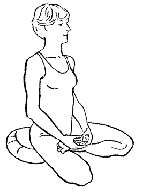










































































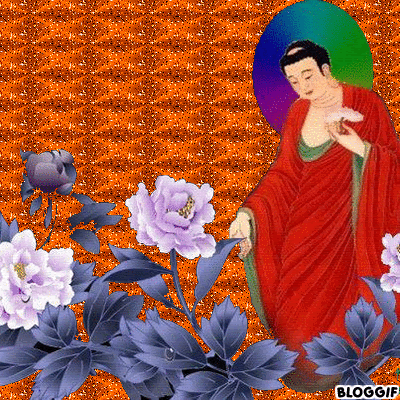



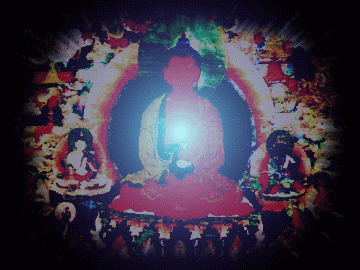
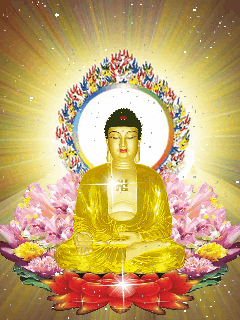



















:max_bytes(150000):strip_icc()/feet-of-buddha-56a0c49d5f9b58eba4b3a6c3.jpg)

:max_bytes(150000):strip_icc()/GettyImages-148625028-56e354d03df78c5ba056e73b.jpg)


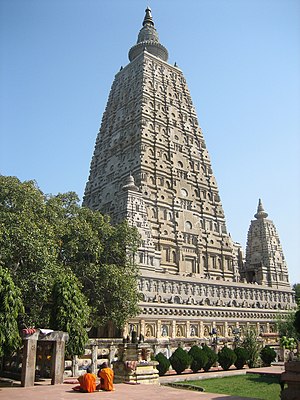

















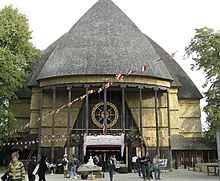

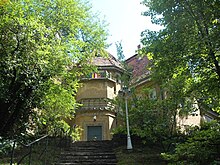


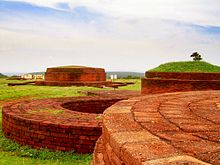
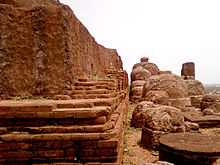


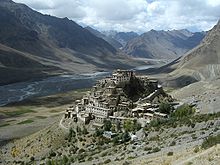




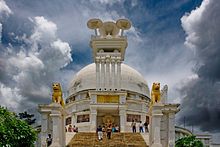


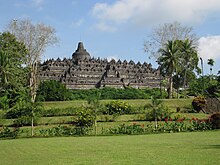

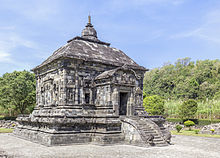

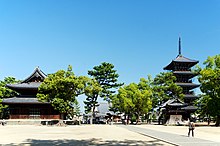





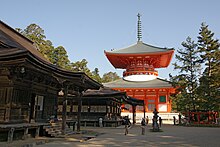







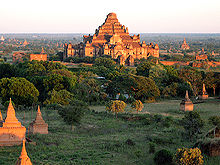


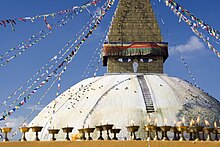

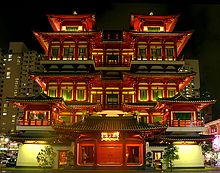
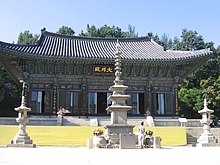
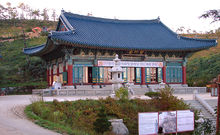



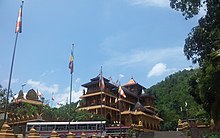

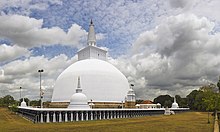





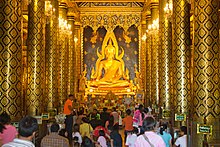




 Content from
Content from  https://www.revolvy.com/main/index.php?s=Pagoda
https://www.revolvy.com/main/index.php?s=Pagoda






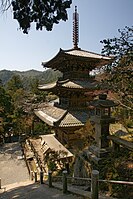



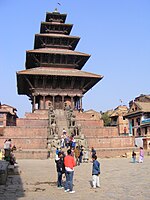


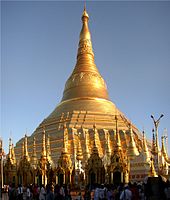
 Buddha
Buddha





























